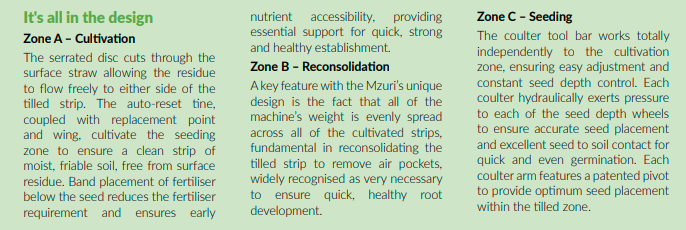If you would like a printed copy of any of our back issues, then they can be purchased on Farm Marketplace. You can also download the PDFs or read online from links below.
-
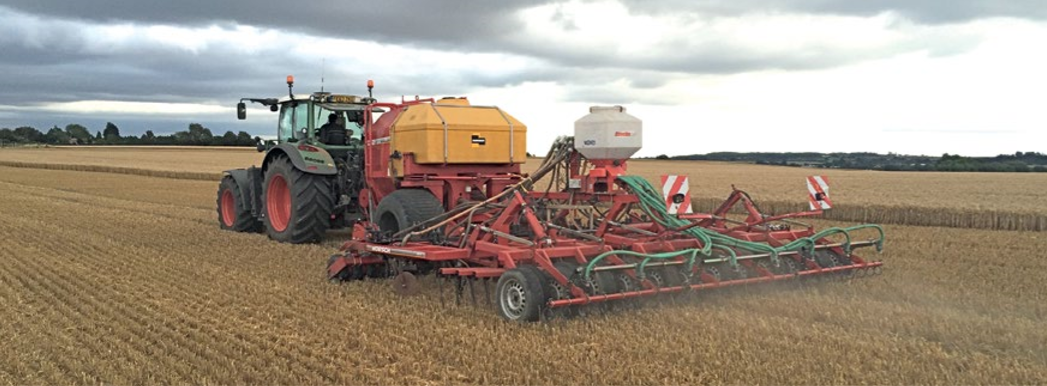
How To Start Drilling For £8K
Clive Bailye’s seed drill of choice is his 6m John Deere 750A , which has been used exclusively for 3-4 seasons. Last year, with an increased acreage, the founder and publisher of this Direct Driller magazine thought a second seed drill was necessary. Having just the one machine was a risk and in a difficult season would mean drilling was delayed. He looked around and found a good condition Horsch CO6 tine drill advertised in Germany.
Words and pictures by Mike Donovan
After delivery he rebuilt the coulters to a narrow profile so as to reduce soil disturbance. He says the tine drill is very useful driling after straw crops such as osr and also through the straw on second crop cereals.
Buying the drill from a German farmer was not particularly complicated, and provided him with a higher spec machine than Horsh sell in the UK. The seed dart tyres are much wider, and the machine is fitted with blockage monitors as well as full width front packers and also a liquid fert application system.
A sheaf of photos were taken, and Clive then asked for some of specific parts to show wear. The deal was done at under £5,000 which Clive says is the market value of these machines which are too large for small farmers to buy. Original owners like to buy new and sell when the machine is still in good condition.
Narrow tines with wear tiles
@Clive knew he wanted to make changes, substituting the Horsch tines and coulters for something far narrower, and has ended up getting his own design of tine made, which has a wear tile made from Ferobide, far harder than tungsten. The drill is on the farm primarily for osr and 2nd crop cereals drilled into chopped straw and the 25cm spacing is okay for these crops.
Comments on Clive’s on-line forum, TFF, said the drill many not be so good with beans, as the slot is a mere 12mm wide. And in barley the spacing may well be too wide as it needs to be thick. Clive points out that the seed pipe can actually be a bit wider than 12mm as it is in the shadow of the point. It would be good to have the option of using it for beans.

Above left: The cheap CO6 is being calibrated ready for its first outing

Above right: The adapted Horsch is being filled by the home built drill logistics trailer with seed and liquid starter fert.
Getting around the German instructions
The Horsch came, of course, with a control box and instructions in German. More on-line discussion revealed that English instructions were available on the Horsch website, and another explained that Horsch was sourcing some of these parts from Agton in Canada anyway. Zealman from New Zealand explained that the button marked with callipers should be held down for around 5 seconds. The menu is where you adjust the tramline sequence, valve layout and row numbers.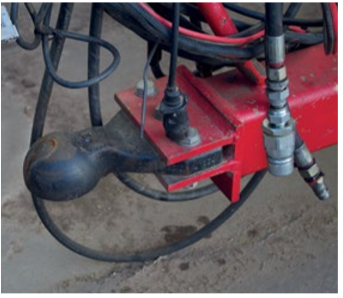
Ball hitch is a continental standard and provides a positive connection between tractor and drill

The Stocks Wizard has a rotor modified for Avadex which otherwise leaks everywhere
A Stocks Wizard is on the back of the drill and used for Avadex. Here again the knowledge of actual farmers is helpful. Alistair Nelson warned that the rotor and the surrounding shroud need to be changed, and he got good advice “from Rick at Stocks”. Clive has the same setup on the 750A and says that the Avadex leaks everywhere unless the modification is made. The drill was acquired and modified in 2016 and the results have been excellent.
The machine went through the residue without many problems and having the second drill has meant more timely planting. Clive has shown that moving into No-Till is not the expensive exercise so many farmers think it might be. The total cost, after modifications which included replacing all tines and coulters, was under £8,000.
Author Mike Donovan writes: we have featured a number of home made direct drills in @Practical Farm Ideas, and are always interested in seeing more. Please contact mike editor@farmideas.co.uk or 07778877514.
-
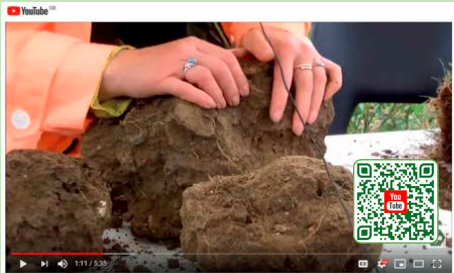
Agricology What Is Healthy Soil Video
A healthy soil is vital to ensure both high yields and future high yields, as well as environmental protection – there are no negative consequences on the ecosystem from having a healthy soil! But what is a healthy soil?

Soil health can be defined as a soil’s ability to function and sustain plants, animals and humans as part of the ecosystem.
However, due to the opacity of the soil and the fact that (most of the time) plants grow, the health of the soil is often over-looked. There are five main factors that impact the health of the soil and can have a large influence over its capability and resilience to function, they are:
1. Soil structure
2. Soil chemistry
3. Organic matter content
4. Soil biology
5. Water infiltration, retention and movement through the profile
A healthy soil will have a good combination of all these factors, whilst an unhealthy soil will have a problem with at least one of these. Whether there are structural problems – compaction, plough pans; or waterlogging; these issues will have a cascade effect until all the other factors are impacted. A healthy soil will provide a buffer to extremes in temperature and rainfall – reducing the impact of extreme weather events; it will also be able to maintain productivity and function within an agricultural system. A healthy soil has plenty of air spaces within it, maintaining aerobic conditions.
When a soil has limited air spaces, anaerobic conditions dominate, leading to waterlogging and stagnation of roots and the proliferation of anaerobic microbes and denitrification (the loss of nitrogen from the system). A healthy soil will filter water slowly, retaining the nutrients and plant protection products (PPP) applied to the crop. If rainfall moves through the soil profile too quickly or if it is prevented from entering the soil through compaction or soil sealing, surface runoff increases, taking soil, nutrients and PPP with it, increasing the risk of flooding.
The potential of cover crops and no-till
At the Allerton Project we have been involved in investigating the sustainable intensification of agriculture through different experiments. Some researchers have investigated cover crops – which have been suggested to be the answer to everything; reducing soil erosion and leaching, whilst increasing water retention, soil organic matter and improving soil structure, as well as potentially suppressing weeds – although our results at this time do not confirm all of this. Other research has focused on moving away from conventional agricultural practice, with greater emphasis on no-till.
One of the fields at the Allerton Project has not been ploughed for the last 14 years and the soil structure is visibly different compared to other soils on the farm. No-till systems can help improve soil fertility, create changes to the structure and properties of the soil due to the stability of the environment, and enhance soil biology. Over time the no-till field has had the highest yields compared to the conventional field equivalent on the farm. Soil compaction is easily created – one pass of farm machinery at the wrong time (when the soil is waterlogged) can create a compacted layer, which can take many years to remediate. Understanding the mechanisms of compaction and how to alleviate it is another experiment occurring at the Allerton Project this year.
Overall, crop choice, rotation, and management, as well as establishment practice and maintenance can all greatly affect the “health” of the soil.
Dr Felicity Crotty is the Game and Wildlife Trust Allerton Project’s resident soil scientist. She writes:
“I have been researching soil biology and soil health for the last ten years. Firstly, I studied the soil food web during my PhD at Rothamsted Research (North Wyke) and subsequently as a post-doc at Aberystwyth University working on the PROSOIL project, which investigated maintaining healthy soil on livestock farms in Wales; and the SUREROOT project, that studied the effects of festuloliums as a forage crop. I joined the Allerton Project in 2015. My research covers all aspects of soil science – biology, physics and chemistry; although my main areas of expertise are soil biology, earthworm, mesofauna and nematode identification. Understanding how different management strategies and cropping systems effects the environment is key to sustainable farming and through my work I investigate these changes over time. The main projects I have been working on have been the Sustainable Intensification Research Platform and the EU Horizon 2020 project SOILCARE.
-

What Do You Read?
If you are like us, then you don’t know where to start when it comes to other reading apart from farming magazines.
However, there is so much information out there that can help us understand our businesses, farm better and
understand the position of non-farmers.We have listed a few more books you might find interesting, challenge the way you currently think and help you farm better.
The Carbon Farming Solution

Agriculture is currently a major net producer of greenhouse gases, with little prospect of improvement unless things change markedly. In The Carbon Farming Solution, Eric Toensmeier puts carbon sequestration at the forefront and shows how agriculture can be a net absorber of carbon. Improved forms of annual-based agriculture can help to a degree; however to maximize carbon sequestration, it is perennial crops we must look at, whether it be perennial grains, other perennial staples, or agroforestry systems incorporating trees and other crops. In this impressive book, backed up with numerous tables and references, the author has assembled a toolkit that will be of great use to anybody involved in agriculture whether in the tropics or colder northern regions.
For me the highlights are the chapters covering perennial crop species organized by use staple crops, protein crops, oil crops, industrial crops, etc. with some seven hundred species described. There are crops here for all climate types, with good information on cultivation and yields, so that wherever you are, you will be able to find suitable recommended perennial crops. This is an excellent book that gives great hope without being naïve and makes a clear reasoned argument for a more perennial-based agriculture to both feed people and take carbon out of the air. Martin Crawford, director, The Agroforestry Research Trust; author of Creating a Forest Garden and Trees for Gardens, Orchards, and Permaculture
Mycorrhizal Planet: How S y m b i o t i c Fungi Work with Roots to Support Plant Health and Build Soil

An Mycorrhizal fungi have been waiting a long time for people to recognize just how important they are to the making of dynamic soils. These microscopic organisms partner with the root systems of approximately 95 percent of the plants on Earth, and they sequester carbon in much more meaningful ways than human “carbon offsets” will ever achieve. Pick up a handful of old-growth forest soil and you are holding 26 miles of threadlike fungal mycelia, if it could be stretched it out in a straight line. Most of these soil fungi are mycorrhizal, supporting plant health in elegant and sophisticated ways. The boost to green immune function in plants and communitywide networking turns out to be the true basis of ecosystem resiliency. A profound intelligence exists in the underground nutrient exchange between fungi and plant roots, which in turn determines the nutrient density of the foods we grow and eat.
Exploring the science of symbiotic fungi in layman’s terms, holistic farmer Michael Phillips (author of The Holistic Orchard and The Apple Grower) sets the stage for practical applications across the landscape. The real impetus behind no-till farming, gardening with mulches, cover cropping, digging with broadforks, shallow cultivation, forestedge orcharding, and everything related to permaculture is to help the plants and fungi to prosper . . . which means we prosper as well.
Building soil structure and fertility that lasts for ages results only once we comprehend the nondisturbance principle. As the author says, “What a grower understands, a grower will do.” Mycorrhizal Planet abounds with insights into “fungal consciousness” and offers practical, regenerative techniques that are pertinent to gardeners, landscapers, orchardists, foresters, and farmers. Michael’s fungal acumen will resonate with everyone who is fascinated with the unseen workings of nature and concerned about maintaining and restoring the health of our soils, our climate, and the quality of life on Earth for generations to come.
A Soil Owner’s Manual: How to Restore and Maintain Soil Health

A Soil Owner’s M a n u a l : Restoring and Maintaining Soil Health, is about restoring the capacity of your soil to perform all the functions it was intended to perform. This book is not another fanciful guide on how to continuously manipulate and amend your soil to try and keep it productive. This book will change the way you think about and manage your soil. It may even change your life. If you are interested in solving the problem of dysfunctional soil and successfully addressing the symptoms of soil erosion, water runoff, nutrient deficiencies, compaction, soil crusting, weeds, insect pests, plant diseases, and water pollution, or simply wish to grow healthy vegetables in your family garden, then this book is for you. Soil health pioneer Jon Stika, describes in simple terms how you can bring your soil back to its full productive potential by understanding and applying the principles that built your soil in the first place. Understanding how the soil functions is critical to reducing the reliance on expensive inputs to maintain yields.
Working with, instead of against, the processes that naturally govern the soil can increase profitability and restore the soil to health. Restoring soil health can proactively solve natural resource issues before regulations are imposed that will merely address the symptoms. This book will lead you through the basic biology and guiding principles that will allow you to assess and restore your soil. It is part of a movement currently underway in agriculture that is working to restore what has been lost. A Soil Owner’s Manual: Restoring and Maintaining Soil Health will give you the opportunity to be part of this movement. Restoring soil health is restoring hope in the future of agriculture, from large farm fields and pastures, down to your own vegetable or flower garden.
For the Love of Soil: Strategies to Regenerate Our Food Production Systems
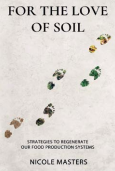
Learn a roadmap to healthy soil and revitalised food systems for powerfully address these times of challenge. This book equips producers with knowledge, skills and insights to regenerate ecosystem health and grow farm/ranch profits. Learn how to:- Triage soil health and act to fast-track soil and plant h e a l t h – B u i l d healthy resilient soil systemsDevelop a deeper understanding of microbial and mineral synergies-Read what weeds and diseases are communicating about soil and plant health-Create healthy, productive and profitable landscapes.
Globally recognised soil advocate and agroecologist Nicole Masters delivers the solution to rewind the clock on this increasingly critical soil crisis in her first book, For the Love of Soil. She argues we can no longer treat soil like dirt. Instead, we must take a soil-first approach to regenerate landscapes, restore natural cycles, and bring vitality back to ecosystems. This book translates the often complex and technical know-how of soil into more digestible terms through case studies from regenerative farmers, growers, and ranchers in Australasia and North America. Along with sharing key soil health principles and restoration tools, For the Love of Soil provides land managers with an action plan to kickstart their soil resource’s wellbeing, no matter the scale.“For years many of us involved in regenerative agriculture have been touting the soil health – plant health – animal health – human health connection but no one has tied them all together like Nicole does in “For the love of Soil”! ” Gabe Brown, Browns Ranch, Nourished by Nature.
“William Gibson once said that “the future is here – it is just not evenly distributed.” “Nicole modestly claims that the information in the book is not new thinking, but her resynthesis of the lessons she has learned and refined in collaboration with regenerative land-managers is new, and it is powerful.” Says Abe Collins, cofounder of LandStream and founder of Collins Grazing. “She lucidly shares lessons learned from the deep-topsoil futures she and her farming and ranching partners manage for and achieve.”The case studies, science and examples presented a compelling testament to the global, rapidly growing soil health movement.
“These food producers are taking actions to imitate natural systems more closely,” says Masters. “… they are rewarded with more efficient nutrient, carbon, and water cycles; improved plant and animal health, nutrient density, reduced stress, and ultimately, profitability.”In spite of the challenges food producers face, Masters’ book shows even incredibly degraded landscapes can be regenerated through mimicking natural systems and focusing on the soil first. “Our global agricultural production systems are frequently at war with ecosystem health and Mother Nature,” notes Terry McCosker of Resource Consulting Services in Australia. “In this book, Nicole is declaring peace with nature and provides us with the science and guidelines to join the regenerative agriculture movement while increasing profits.”Buy this book today to take your farm or ranch to the next level!
Teaming with M i c r o b e s : The Organic G a r d e n e r ‘s Guide to the Soil Food Web

-
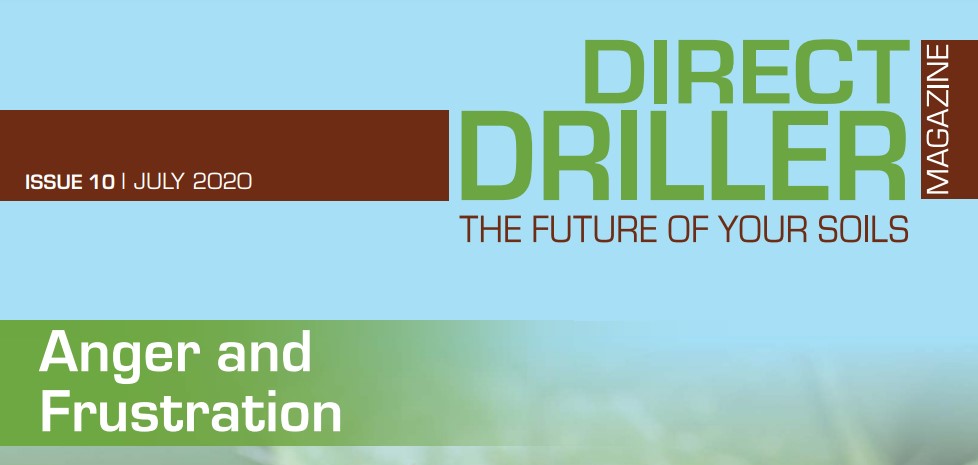
Introduction – Issue 10
We, the readers of Direct Driller, need to give a huge round of applause to Clive and Chris, the energy behind this magazine, together with all the contributors to this issue. The contents is truly awe-inspiring, and the knowledge it contains colossal. It’s impossible to pick individual articles because that relegates the others, and it is all Premier League stuff. It may be pie in the sky, but I continue to envisage staff and students in colleges and universities up and down the land devouring each issue, for both its editorial content and the highly focussed advertising it carries.
If you, as a reader, have connections in these places do please introduce Direct Driller to them. We would be delighted if they got in touch with us. I can see staff and students being inspired to set up studies on a whole variety of direct drilling topics – drills; fertilisers; organic No-till; crop protection; cover crops; crop termination; crop rotations – and much more. No-till presages a whole new world to research, understand and implement.
The ‘funding’ is already there and I can’t for the life of me see what is holding farm education back, while farmers, such as those featured in every issue of Direct Driller, are doing their own experimenting and assessing. The topic is important for practical farmers today. All involved in farming are well aware that we are at a tipping point. We have perhaps a year, two at most, to decide the direction of travel for our farms. How are we going to make up the financial shortfall? Is our farm on the right course? Given what we know, or anticipate, or fear for the future, can we say with confidence that we are are doing the right thing? Going in the right direction?
As we work our guts to get the harvest in there may well be a moment when farm planning takes a lucid position in our minds. Get a good day when the wheat is fit, the yield better than you dared expect, and in the cab there’s the hum of the harvester engine, the rattle of corn going up the feeder… just right to get those ‘what if’ thinking juices going.
There’s so much to consider, from the present financial position of our farm today, the margins we are making, and the people who are currently involved in the business. Are the important figures for the farm business getting better, or have the numbers showing our net returns, the figure that remains after all the costs are taken into account, been somewhat lacklustre? Here are the warning signs which we can choose to ignore or decide to address, either on our own or with the help of others.
Many will choose the former. There’s nobody they know with the answer, and the problem with experts is that there’s no point in ignoring their advice. Experts can of course be disatrously wrong. The knowledge contained in this issue can only help set you up for better things. Happy reading!


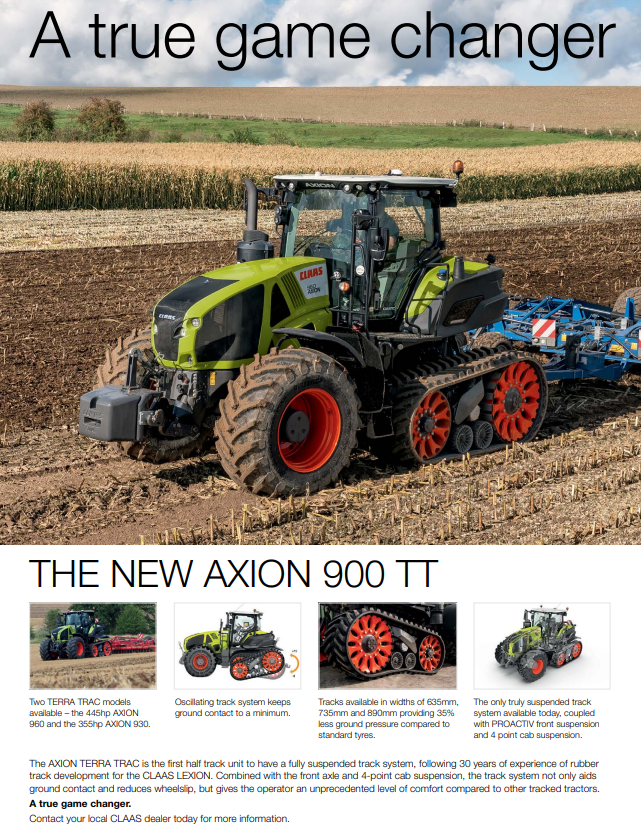
-
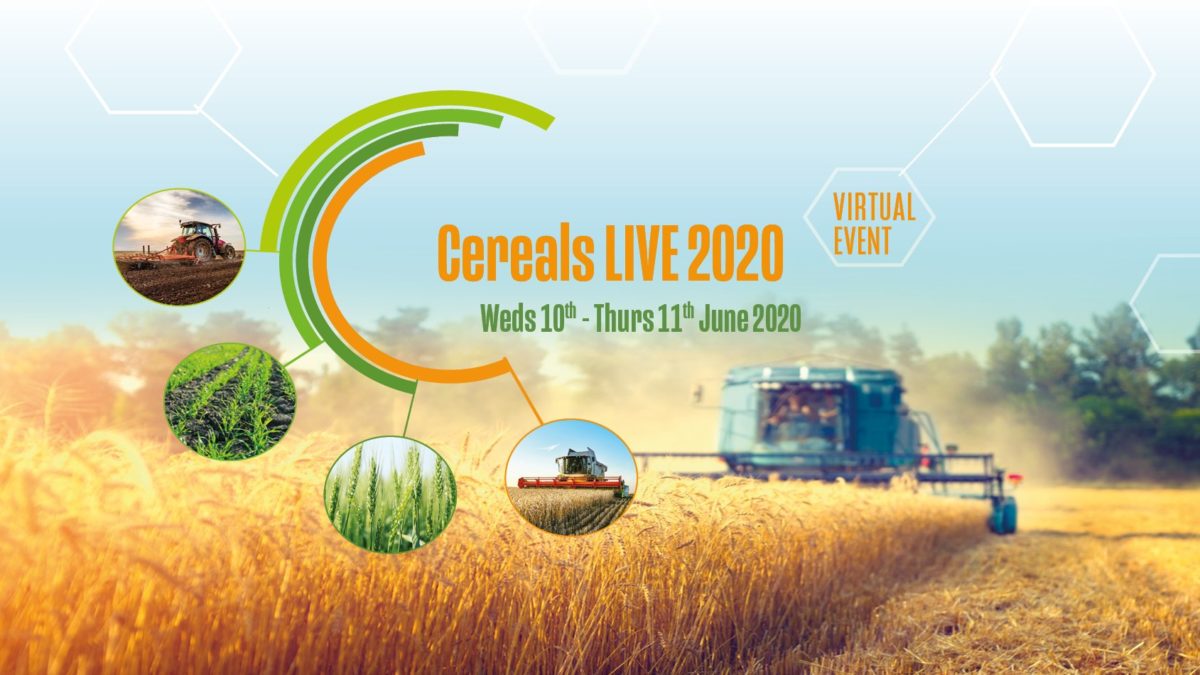
To Show or not to Show
By now the show season should be well underway and in some ways it still is. But not in the way we are used to it. Shows like Groundswell, are for many, the highlight of our year. Not just a place to learn, but a place to meet friends, chat about farming and have a beer. The last part particularly appeals to me when attending Groundswell, especially when the sun is shining. However, all is not lost. There is still lots going on. Shows cannot happen, but small one-to-one tours can.
Online shows have become a thing and I suspect they will become a part of all shows going forward. At online shows, you can attend webinars, watch videos and live product tours and speak to exhibitors. It’s all a bit new, but they offer a permanent record of a show that normally just doesn’t exist after a live show.
Farmers can follow up after events have finished, catch up on webinars they missed and keep talking to exhibitors long after the show day has passed. In fact, the only thing missing from an online show, is the live show itself. A live/online hybrid show offers all the benefits of face-to-face contact with all the convenience of being able to catch up with content when it’s convenient to you and see all the things you missed at the live show.
Looking back, there has always been shows I’ve missed due to other work commitments or clashes. Online shows, while also having live content, do offer convenience. Shows are busier in the evenings than they are in the day for instance. Farmers still want to attend, but they can do it when they want to, even from the tractor cab.
Online shows also bring in a wider audience. Virtual Cereals was attended by over 30,000 people on The Farming Forum and this included people from over 90 countries around the world. This is a bigger audience than attends the live show, although you do not have their attention for the same period of time. But if you had both, then it offers the best of both worlds. I have always wanted to attend the No-till shows in the States, but it always seem to clash with other events in the UK.
The thought of being able to attend international events online is really appealing and I’d still happily pay for a virtual ticket. So, to add to hybrid cars, we will have hybrid shows going forward. Welcome to 2020! You can still view Virtual Cereals here.


-

Featured Farmer – James Alexander
Contractor, Litchfield Farm, Enstone, Oxfordshire

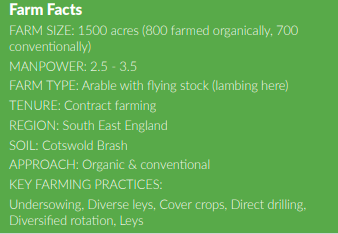
Litchfield farm near Enstone in Oxfordshire (owned by Nicola and Kevin Knott) is one of four farms I contract farm (of a total of 1,500 acres, this one is 800 acres). Litchfield is an organic arable farm while the others are ‘conventional.’ In general the rotation is a 2-year ley, spring beans, spring / winter wheat, spring barley, and oats. (In a conventional rotation we generally have a 2-year ley, winter wheat, spring barley, and oilseed rape.)
I’ve learnt a lot from farming organically that I’ve taken into the conventional and vice versa. I have the benefit of both worlds – I can do both and see what works! The conventional farms are all direct drilled – wherever we can we direct drill. The organic Litchfield farm is the complete opposite – we plough, cultivate, and drill. I am focused on trying to find a way to reduce cultivations and direct drill, looking after the soil health and managing weeds as best I can. I’ve been involved in an Innovative Farmers field lab looking at alternative method for terminating cover crops which you can find out more about from the link * below. Various cover crop trials I have been carrying out have led on from this field lab; I have been experimenting with mustard and oil radish (see below), beans, oats, peas, vetch and rye.
We had been stockless for about 11 years but now have 125 breeding ewes which are permanent and being lambed so we can start having our own flock of sheep on the farm (Sam & Charlotte Clarke set up an organic flock and they’re lambing them here – they’ll go on the leys and cover crops). We saw the benefits in 2018 when we grazed 90 acres of cover crops on arable fields which meant we could min till the fields rather than plough them. I grew some of the best oats I’ve ever grown – can’t say it’s all to do with the sheep and cover crops but I’m sure it had a big impact. We have about 180 acres of clover leys in the rotation every year.
Fattening lambs on clover is brilliant – it gives us an easy way of grazing the lambs but then we also have the option if we are putting winter cover crops down, to graze them with sheep – and if it means we can min till instead of ploughing, all the better! Blackgrass is worse in some years than others – it depends on the rotation and the fertility we have in the soil. We sheep, top, sheep, and top leys and leave as a mulch, the aiming being to turn clover leys without ploughing. In addition to the farming I also manufacture and sell no-till drilling equipment.

Sustainability in practice:
Using a roller crimper to improve weed management and soil health
I am very keen to reduce tillage in the organic system – having seen the benefits in the conventional system, so I direct drill where I can. Cover crops are an essential part of that system but I need to find a way to control them without using glyphosate. I have therefore been developing a UK-focused roller crimper which essentially breaks the stems of the cover crop when it’s going to seed (it’s weakest point) and then can kill it. This is a key part of the conventional farms but in the last few years I’ve been experimenting with how I can make it work on the organic farm. Two years ago I tried rye and vetch and found that it was quite challenging to kill the vetch – it took multiple passes, but I am hoping to develop this system…
See the scrolling images above to view a field of vetch at various stages of crimping.

Watch the video footage below to find out more of what James has to say about using a roller crimper to manage cover crops, assist with direct drilling, and improve weed management and soil health.
Permanent cover crop of white clover
James explains: “In a field after the spring barley has established, we’re undersowing it with a crop of white clover (small variety). The idea being, similarly to another trial with mustard and vetch, that we keep an understory of white clover permanently in the bottom of the crop which will then allow us to direct drill the following crop back into it. I’m looking at this as part of a field lab I’m involved in that’s exploring using a permanent living mulch understory in low input / no till systems… By having the clover there, we also have a permanent source of nitrogen so we mightn’t have to do our 2 / 3 year red clover leys which we’re losing a bit of production with. It means we can keep cropping, and hopefully produce some better quality crops and yields too.
We plan to direct drill oats into it in the autumn. We could mow and drill into the clover or graze it hard with sheep then drill into it. With having an understory of clover, if it’s a good cover, it means I can just about drill into it any day of the year. We’ll learn over the next year or so what works best; if we put a spring crop in, we can leave the clover over the winter and drill the spring crop beginning of March so it can get going before the clover does. We’ll probably establish the clover when the spring barley is at a couple of leaves stage. I’m not sure yet if we’ll put the clover in with a drill or spread it and grass harrow it; it will depend on the conditions at the time.
Buckwheat to help with dock control
James has been growing buckwheat for two or three years to try and help with the dock problem. Buckwheat is thought to emit allelopathic chemicals that can help control docks (see information in relation to another field lab here).
He says: “Our initial idea in relation to dock control was to keep cultivating, which accelerated the problem! Last year (2019) was the third year we’ve put a buckwheat crop in over the summer straight after the spring barley. We direct drilled the buckwheat into it and have been ploughing the buckwheat in green before it dies which helps stop the docks growing. We think we are seeing less and less docks. We’re home saving our own buckwheat seed to make the job cheaper. Higher seed rates (thicker crops) do better. Buckwheat lifts P and K (phosphate and potash) from deep down in the soil which is another bonus. It is also twice as efficient at taking nitrogen into the plant. We put buckwheat in with our rape as a companion which we have found helps control flea beetle. The flowers are also great for beneficial insects.
MOTIVATIONS:
One of my main motivations is to look after the soil – our most precious resource. In the organic system, fertility building leys help protect and feed the soil but also help us control blackgrass – using a 2-year fertility-building ley by mulching. On the farms managed conventionally, direct drilling and no till works very well if you can do it year after year and combine with using cover crops – winter cover crops or 8 week cover crops during the summer – it gives you a lot back. I am aiming to go reduced tillage or direct drilling in the organic system. The farming system needs to be reliable and viable – for me and the owners.
We’ve started to feed our soil with some molasses – we trialled it in 2018, and in 2019 we have used it on a wider scale. On the conventional farms we’ve been able to cut fertiliser back by 5% with using molasses. The mollases makes the bugs in the soil happier; they’re working for us and help us to look after the soil. They also help us utilise the fertiliser we’re applying better on the conventional farms. With good soil comes less pests and less weeds, which can only be a good thing.
We generally direct drill our fertility building leys (but min till some). If we can do more no till, it would undoubtably be more weatherproof and soil friendly than ploughing. This last year we have had fields that have been ploughed and cultivated that we couldn’t touch because they were too wet, whereas with fields that had been direct drilled, we only needed the surface to dry off.
In the video clip here James touches on some of the learnings from both the organic and conventional way of farming (apologies for the wind interference!).

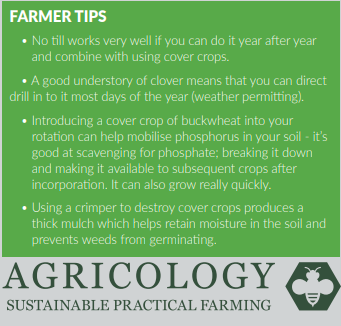
-
Agricultural Ethics: A Decision Making Tool For Farmers? (Part 1)
Written by Ralph Early
”No one will protect what they don’t care about; and no one will care about what they have never experienced.” David Attenborough.Not so long ago, wildlife in Britain was so much more abundant than it is today. Back in the 1960s, in early summer, one could walk the fields of most counties from Land’s End to John O’Groats and quite literally trip over wildlife: rabbits, hares, pheasants, partridge, and many other species hiding in knee-high grass.
A stroll through meadows carpeted with stunningly beautiful wild flowers would fill the air with butterflies, as once disturbed they departed the sweet nectar in one location to alight on blossoms in another. At night the same meadows would be filled with moths, swarming uncontrollably to the light of a torch. For anyone who remembers such experiences, this was Britain’s countryside at its most glorious. Sadly, in 2020, that world no longer exists, which is an undeniable calamity. The loss of so much of Britain’s wildlife over the last half century, and with it many irreplaceable ecosystems, undermines the capacity of Britain’s natural environment to support planetary ecosystem services.
This is a moral issue of immense importance to the future of humanity and the innumerable species with which we share the planet. It is also, distressingly, an incontestable catastrophe for young people today, for they will never experience British wildlife of the quality and diversity routinely encountered less than a lifetime ago.
They will never know nature’s wonders common to the Britain of their grandparents and greatgrandparents. A land where skies were filled with birds, hedgerows buzzed loudly with insects, and countless small mammals, reptiles and amphibians scurried in search of food. That world has passed into history and tragically may never return.
The past is the key to the future
If we are wise we will learn from the diminution of Britain’s natural heritage: a disaster that was so clearly avoidable, but which we chose not to see even as it was unfolding. Indeed, we have a moral duty to learn from it not just for ourselves, but for future generations whose rights we may deny through our own thoughtlessness and selfishness. We must learn from the past and in doing so must find ways to chart an ethically sound and ecologically sustainable course for the future. In this we should recognise that the word ‘sustainability’ is itself morally instructive. Sustainability as a term is now part of common usage in the agrarian lexicon.
This is a positive sign. It confirms recognition that we are prepared to admit that aspects of farming practice, as we have employed them for decades, are in fact environmentally harmful.
They are demonstrably unsustainable. Importantly, by being prepared to admit we got things wrong, we express understanding that we know we must change the way we farm. We also need to change the way we think about agricultural food production such that we find better ways to work with nature, not against it. In this respect we need to dispose of irrational perspectives, such as the perverse idea that by divine moral right mankind has dominion over nature. Such archaic notions are embodied in many of the farming and land use practices that created the problems we now face. If we are to manifest a truly sustainable future, a paradigm shift and definitely an ethical shift in our thinking about food and farming will be needed.
Happily this is underway, as evidenced by many practical actions being employed by enlightened, progressive and morally aware farmers, such those using zero tillage methods to restore soil quality and fertility. It is also seen in the way ethical thinking is being used overtly and in less obvious ways to guide agricultural food production more broadly. Notably, we are witnessing the development of agricultural ethics as a specialised branch of moral philosophy, and a decision making tool, accessible to farmers, agrifood businesses, policy makers etc.
This article is then the first part of a twopart article on agricultural ethics which, it is hoped, will be of particular value to everyday farmers as the professionals to whom we remain constantly indebted for keeping us fed. The aim of the article is to explain something of the concept of agricultural ethics and how it can be of practical value. However, before we immerse ourselves in ethical theory in part two, in this part we should first reflect a little on the history that has brought us to this point.
Change and acceleration
Change is inevitable. During the last century it has occurred at an almost unimaginable rate, particularly in the industrialised world. Since the end of World War II, significantly as a consequence of Norman Borlaug’s Green Revolution, British agriculture has been transformed almost beyond recognition. Britain’s rural landscape began to change markedly in the 1960s, with a pace that accelerated through the 70s and 80s. Post-war agrifood policies aimed at enhancing Britain’s food security were partly responsible, as was the EEC’s Common Agricultural Policy which aimed at maximising agricultural productivity.
These factors catalysed a momentous shift in perspective with respect to the purpose of farming and, significantly, the end of the 1960s began to see the transference of elements of farm decision-making from farmers themselves to a new breed of off-farm, agricultural specialist, the farm consultant. These advisors employed by agribusiness corporations, banks and ADAS (Agricultural Development and Advisory Service), among others, introduced new perspectives to British farming which centred on ‘efficiency’, ‘productivity’ and ‘profitability’. These terms became watchwords for the industry.
But nature is not efficient, productive or profitable in any way that agricultural economists, especially ones wedded to the neoliberal capitalist ideology of Friedrich Hayek and Milton Friedman that now shapes the British economy, would appreciate. A consequence of the development of agriculture as a movement centred almost exclusively on productivity, efficiency and profit, was that big came to be regarded as beautiful. Small-scale, mixed farms were regarded as a thing of the past.
Large farms grew larger, increasingly focusing on fewer or even single enterprises, and monoculture agriculture became the new norm. Such farming was prized because it was modern. It represented a vision of the future, communicated evangelically to aspiring young farmers in colleges and universities throughout the land, with the support and endorsement of burgeoning transnational agri-business corporations. As British farms changed so farmers, once steeped in the traditions of preceding generations and a sense of spiritual indebtedness to nature and the land, were transformed into agricultural technologists. A new breed of farmer had arrived. The farmer as expert in distinct and even separate types of agricultural food production. No longer the generalist, increasingly the specialist.
As farming has become more specialised, a relatively small number of major agri-business companies have achieved significant influence over the British agricultural sector.
At the same time, the supermarkets have ensured that they are the main points of access to the food marketplace for British farm produce. Power imbalances are now common within the food system and the pressure to survive is a constant source of anxiety for farmers, often exacerbated by the lack of morally just financial rewards. For some, solutions lie in the application of new technologies, for agriculture itself is a technology, and in this they may be right. At least in part.
Experience reveals, however, that both science and technology often have the tendency to advance faster than the wisdom required to regulate and control them. New technologies such as precision farming, genetic engineering and CRISPR-Cas9 (clustered regularly interspaced short palindromic repeats and the CRISPR-associated enzyme, Cas9) will undoubtedly play a role in the development of British agriculture, as will other technologies. But if farming is to become truly sustainable and, importantly, ecologically benevolent in the way it serves the needs of humankind today and in the future, it will need to embody moral values based in a deep respect for ecology and the workings of the natural world.
Such values will inevitably be informed by the theory and practice of agricultural ethics which, necessarily, will demand that all who regard themselves as agriculturalists, whether directly involved in farming or employed in ancillary and support sectors, remain conscious of Ernst Friedrich Schumacher’s words, “Modern man talks of the battle with nature, forgetting that, if he won the battle, he would find himself on the losing side.
Old problems demand ethical solutions
As farmers work to survive in an increasingly competitive world they quite reasonably seek opportunity in innovative ideas and technologies. However, while novel ideas and technologies may yield many benefits, they may also entail unintended consequences which bring to the fore a variety of ethical dilemmas. Indeed, the central moral issue faced by all farmers is found in the fundamental duality of doing good through the production of food yet, at the same time, minimising and ideally preventing the harms that agricultural practices may entertain.
For instance, over the last 50 years agricultural policy decisions, combined with market forces and innovations by the agricultural machinery and agri-chemicals sectors, have triggered an increase in the size of farm machinery with promises of continually increasing efficiency, productivity and profitability. This, though, has generally been associated with the elimination of hedges and other wildlife habitats in the UK to create larger, more efficiently managed fields with the unintended consequence of a concomitant decline in wild and farmland biodiversity.
Ploughing and the use of heavy machinery, once considered a standard practice, is now known to cause soil erosion and the release of carbon dioxide, a greenhouse gas, while artificial fertilisers accelerate the loss of soil quality and organic matter, catalysing the breakdown of aggregate structure so increasing erosion and loss of top soil. Additionally, phosphate, a constituent of synthetic fertilisers and organophosphate pesticides, causes fresh water eutrophication while nitrogen from fertilisers causes sea water eutrophication.
Research, reported in 2014, suggests that the quality of British farmland soil is now such that only around 100 harvests are likely, which is why the improvement of soil quality has been set as a priority objective for national agricultural policy.
These are just a few of the issues that farming faces and which raise numerous questions of an ethical nature. Indeed, many are issues that may best be understood by means of an ethical lens, so helping to determine the route to genuinely sustainable and regenerative forms of agriculture.
A moral compass for farmers
Ethics is concerned with the moral values and principles that govern human behaviour. It deals with concepts of moral goodness and moral evil, perhaps more easily understood as moral badness, as well as with human actions framed as what is either morally right or morally wrong. Agriculture yields many benefits for humankind, being the source of most food as well as e.g. biofuels and fibre.
But the practice of agriculture can itself present a range of moral concerns, simply because it has the potential to cause both benefits and harms.
For instance, the loss of wild habitat to agricultural food production has already been cited as a moral issue and one that raises many questions about the moral rights of the environment and biodiversity. The use of agri-chemicals demands ethical consideration of the utilitarian balance of benefits versus harms with respect to possible negative externalities, e.g. effects on pollinating insects and the health of farm workers and consumers. Farmed animals, as sentient beings capable of experiencing pain and suffering, deserve for valid moral reasons to be respected and cared for appropriately. These are among many of the moral issues embedded in the practice of agriculture which, because of space, we cannot appraise here but will do so in part two.
Agricultural ethics is then an applied subject of practical value to contemporary farmers who, unlike preceding generations, face a diversity of existential threats which must be resolved if farming itself is to be sustained long into the future. An inescapable and often uncomfortable truth is that many of the challenges that farmers face today are rooted in the practices of agriculture developed in the last 100 years or so, as well as in the general industrialisation that occurred during the last two centuries. Such challenges are epitomised by the problem of anthropogenic global climate change. Solutions to most agricultural problems will doubtless be found in the sciences and technology. But as farming redefines its path to an industrious and ecologically sustainable future, we can be sure that agricultural ethics will provide the moral compass required to navigate the journey and ensure safe arrival.
-
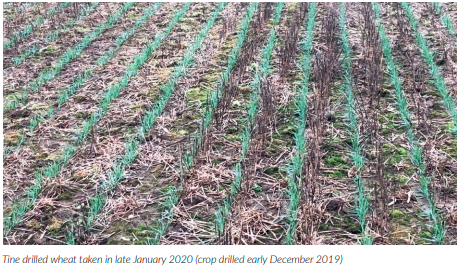
The Path To Conservation Agriculture
Written by James Warne, Soil First Farming
Social media can be a useful source and tool for knowledge transfer, discussion around various topics etc. But far too often it can also be the source of misinformation or confirmation of prejudice, particularly where the discussion deviates from received wisdom. I am referring here to agriculturally based discussions around the topics of Conservation Agriculture (CA), soil nutrition, agronomy etc. There are some common recurring themes which need addressing because all too often much of the advice given is in my opinion flawed for many and various reasons. In this article I will touch on a few of these questions…
‘My soil is not ready’
‘My soil is not ready’ is a common retort. When will your soil be ready? Next year, in two years or five years? By what criteria are you assessing your soil to make this statement? To paraphrase Morrissey, my normal response to this question is how soon is now? The point being that while you continue to cultivate you are slowly, but surely, moving your soil further away from that point of ‘being ready’, whatever that is. Cultivation, while undoubtably bringing some short-term benefits, also brings about its own set of problems; reduced porosity over the longer term; oxidation of organic matter; decimation of worm populations; increased risk of run-off and soil erosion with the consequential issues of diffuse water pollution from fertiliser and pesticides, to name a few.
The path towards Conservation Agriculture can start now if you want it to. Every year of dither and delay is another harvest where you didn’t try something new, and maybe didn’t benefit from the potential to reduce establishment cost. One certainty is that agricultural production in the UK is sliding down the political agenda which will result in reducing financial support. What is apparent from the last few months is that food security is not on the current governments agenda unless it is by means of food import. Whichever way you look at it farming is going to have to work hard to cut its production costs to remain profitable.
So, back to the original question when will the soil be ready? The questions you need to ask yourself are; how did the field in question yield at the last harvest? If the answer is ‘as well as could be expected and comparable to other fields’ that’s a good starting point. Have you trafficked said field with harvest operations or post-harvest operations such as muck spreading or baling? And finally, have you taken a spade out and looked at the soil structure? If you are happy with all the above questions then now is a good time to start changing the system. If you at all uncertain then call in a third-party opinion.
This soil probably isn’t ready for no-till.
You can of course reduce the risk by not converting the whole farm in one year, consider implementing the system across a whole rotation or maybe two rotations. But do not fall into the trap of opportunistic direct drilling as a way of reducing establishment cost because you will never realise the full benefits of the system. Each subsequent cultivation effectively resets the clock and you end up having to travel through the troublesome early years of soil cultivation ‘cold turkey’ (see below) each time. You haven’t reduced the fixed cost structure of the business because you have been holding onto cultivation equipment that could be sold.
‘I have the wrong type of soil’, (it’s too heavy, too light or contains too much silt etc, etc)
Any soil type can be successfully managed through a CA system but it’s true some demand a lot more attention than perhaps others. Light sandy soils with very low organic matter will have a tendency to quickly slump and consolidate, this also applies to soils with a high silt content. Much care has to be applied to field operations only happening when the soil is able to carry the machinery.
Cover crops and cash crops with good rooting characteristics should be grown in the early years as this is what is going to give the soil structural and physical stability. I cannot stress this enough, it’s so important to avoid any performance drop which is one of the main obstacles to adoption. As far as plant growth is concerned the important factor is the pore space characteristics are strongly influenced by the stability of the soil structure when wetted. The presence of earthworms, plant exudates, humus and plant roots themselves all act to encourage the formations of soil structures stable in water.
Clay based soils will have a degree of natural structure provided by the clay colloid, whereas the silts and sands will not have much clay and little organic colloid to help with structure. These soils are often easier to manage in the earlier years, especially where they are calcareous and therefore will have a good calcium carbonate content. As alluded to above the key to success is the early introduction of large amounts of carbon either by chopping residues, spreading manures and compost etc, and by growing cover crops. Doing all of these in the early years is necessary to stabilise the soil structure, to encourage natural porosity and fertility.
‘I am looking at buying a disc drill’
Many seem to be obsessed with moving the minimal amount of soil and consequently are looking at disc drills because they are all over social media. Yes, this is true, disc drills can move very little soil and that can be a good function in some circumstances, but not always and certainly not at the beginning. In the early years the soil will be in a state of cultivation ‘cold turkey’. Take away the cycle of annual cultivation and the soil will start to slump, consolidate and loose porosity before the biology and chemistry starts to sort out the physical stability of the soil and increase the porosity once again. This can reduce crop performance in the early years, this is cultivation cold turkey. Tine drills by their very action will create a little tilth and give a better result more often than not especially when soils are dryer or wetter than ideal.

Tine drills can also drill through green cover if judiciously managed, and they will certainly drill through chopped straw better than any disc drill. The fallacy of only using a disc drill has been shown time and again over the winter months. Poorly established or failed wheat crops resulting from using disc drills on over-wet soil can be seen all over the country. Where tine drills have been used the results are considerably better, but still not perfect. Even this spring it is very easy to spot crops which have been disc drilled where the slots are opening as the soil dries revealing the plant roots to the air and increasing the rate of soil moisture loss. When I mention tine drills I am not referring to those with any form of leading leg, these are strip-till drills and should not be confused with a genuine no-till tine drill. Leading leg strip-till drill designs move too much soil to be ever considered for a genuine CA system.

Don’t believe everything you read on social media (unless it’s about government hypocrisy), get a second opinion, or visit someone who’s already doing it. No-till is part of the solution, not part of the problem.
-
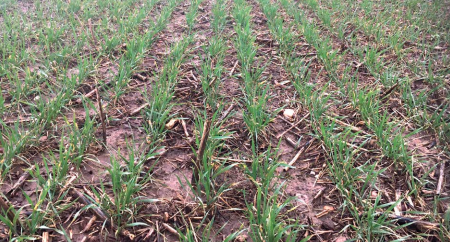
Why Do We Have To Treat Our Soils Like Dirt?
by Nick Woodyatt, Soil Fertility Consultant at Aiva Fertiliser
Normally when starting an article there is much gnashing of teeth and wandering around the garden, or pub in my case, deciding on how to help and enlighten our industry (hopefully). But seeing as it did not stop raining during the autumn/winter, on this occasion the decision was somewhat easier. My town should have been re-named Upton under Severn. On my rounds I saw two four-wheel-drive tractors tied together pulling a plough through the field which looked like toothpaste and all eight wheels were spinning as they pulled themselves down onto their axles: really. Funnily enough the managers of this farming area were having a heated debate at the same time on whether to use a direct or strip till drill which simply amazed me.
We all know that if we lose Glyphosate then getting to a good position [soil wise] for direct drilling is going to be so much more difficult, but not impossible. What is perhaps now becoming obvious, is the effect that climate change will have on this method of growing, with longer and wetter periods, and yes, I do realise now we’ve gone from one extreme of constant rain to the next which is as dry as a party in a nunnery, but that still has the same effects.
On my farm walks I saw the relentless tapping of billions of raindrops on the soil surface produced an 80-100mm cap that has the consistency of wet play-dough which, is either going to cap over growing crops or produce an airless situation in to which seeds will be put. Indeed, I watched seeds direct and strip drilled (on good soils) and I have had to ask the question, ‘Why’? The direct seeds are firmly encased in a solid wall of mud so as they chit, they will more than likely rot. The strip tilled seeds are more of a surprise.
I tripped over this problem in the wet autumn when I was told that my bacterial application had stopped having the desired effect on clubroot in cauliflower. When I visited the problem it was plain to see that the soil wasn’t ready for this method of drilling and the drill had in effect formed shallow drains across the field, therefore producing an anaerobic environment for the soil life hence allowing the harmful anaerobic pathogens to run amuck. Now if it had stayed like that I wouldn’t have been too alarmed, but since then, I have noticed that the lifted rows left by the strip till are overtly wet compared with the surrounding soil regardless of how good the surrounding soil is. The phrase that we earn the right to use any specific piece of machinery is oh so right.
The importance of air
This is leading me to suggest we need to see that there are times when sowing isn’t going to work (difficult to say the least) and we need to stick to the rule that the soil needs what the soil needs, to get air into it. If you can’t find it in you to see that I may have a point then get a friend to strangle you and see how long you can last and no, there is no difference (only in time). We discuss soil, nutrients and where unenlightened, agrichemicals, but how often do we look at air and its importance. Without a free and open soil structure everything else starts to fall apart and your inputs will rapidly rise whist your profits rapidly fall. A perfect soil contains 50% air, and this impinges on so many plant processes and as farmers who are or considering min/no till we really need to understand that this allows:
• Fresh air into the soil where bacteria such as Azotobacter can convert gaseous N into a plant available form saving you money.
• Better penetration of applied nutrients in whatever form they are applied to avoid this surface rooting that we see in many crops.
• Carbon Dioxide from bacteria from the soil up into the leaf increasing photosynthesis and increasing your yield (Why do you think the stoma are on the underside of the leaf?) • Roots to penetrate deeper to get to more nutrients allowing you to reduce your inputs and this increases drought resistance.
• Better roots which allows more sugar release into the soil which feeds the soil life which in turn feeds your crop and resists disease therefore less inputs (the circle of life).
• Better penetration of earth worms who do so much for you free of charge that it is one of the wonders of the world why we try to kill so many (oh, I remember, it’s the profits of the chemical companies, silly me)
I could go on and on, but I think you get the message, start with air and work out from there as against start with Nitrogen and work for the chemical companies. However, as we have to work with excessive wet and excessive dry periods is there anything that we can do to alleviate the situation and of course the answer as always is yes.
Many farmers who are going down the min/no till route are doing it because they feel a moral duty to improve their soils for future generations and those like me, fancy making a profit occasionally. Those who are doing it just as a Black Grass control have stopped reading ages ago.
It’s more than the right products

Firstly, let’s make it clear that to improve a soil for both dry/wet periods isn’t just a case of buying the right products as some want us to believe. One farmer has been told that by applying a good soil wetting agent excess water will drain away; this was said to a farmer whose soil was under water so we did have to wonder where the water would go. There are any number of ways of moving forward and I am going to mention my friend Tim Parton who was `Soil Farmer of the Year 2017’, `Arable Innovator of the year 2019’ and is `Sustainable Farmer of the Year 2020’ and has transformed his soils over the last 10 years just by judicious use of cover crops which absolutely amazes me on two fronts. The first is that Tim is a farm manager so has treated soils with a loving care even though they are not his. How can you not respect a man like that?
Secondly there are many salesmen, sorry, agronomists, who claim cover crops are a waste of time. Tim now uses a low input system so that a bad season doesn’t throw him into pits of despair and he can afford to wait to sow until conditions are right, like me believing that a well planted spring crop will outperform a badly planted winter one. If you get chance to hear Tim speak it is well worth the effort as he explains how regenerative farming starts and ends with looking after the soil, as well as drastically reducing Nitrogen inputs which then allows everything else to work. I have enjoyed working with Tim again this year to make sure that we keep Nitrogen levels low to remove the need for PGR’s or fungicides so smiles all around, well apart from a few obviously but they have had their pound of flesh many times over.
– Please note that I am not making light of this as depression is a major part of our industry so let’s keep an eye on neighbours and colleagues –
Along with cover crops we are seeing an increase in digestate use and any number of other manure wastes, although we do need to look at those to protect our soils for the future and to make sure they don’t become toxic in drier conditions.
My point here is that for every 1% of organic matter that we can increase in the soil we will get an extra 17,000lts of water available to the plants plus drainage is improved as airspaces remain airspaces, except that is in severe flooding. I know that sounds stupid as we were under the damn stuff but as soon as it goes dry, we will all be saying, ‘Why don’t we store more of the water that is around in the winter?’, won’t we? Also, organic carbon, not matter, allows the soil to breathe even when it is very wet (not flooded unfortunately).
Getting better roots
I have never believed that there is a time when you can’t learn something which is why I don’t like the term ‘expert’ which denotes a closed mind. On my travels I have seen things starting to change on regenerative farms where limited tillage is the name of the game:
• Far better plants where no seed treatment was used allowing better germination and faster and better root penetration.
• An amazing root explosion where natural microbial counts were augmented with added brews of bacteria. In one trial, noted at the end of January, the seed in the normal field was on its third leaf but only had a poor shallow root. On the adjacent field under the same conditions but with my added seed drench (bacteria, humate and Silicon), we had similar tops to the plants, but the roots were over 300mm deep (that’s a foot to my dad!)
• Superb root systems where digestate and slurries are buffered with a Humate such as AF Nurture N from Aiva Fertiliser (see, I told you I was a salesman). I have digestates that kill seeds if applied directly to the seed but work wonderfully when added to a Humate.
As far as a way forward is concerned, we need to feed what we have in the ground growing as it has very little in the way of available nutrients although I do not agree with flying around with Nitrogen as that is just meat with no gravy, leading to empty calories and the need for fungicides. Try spraying with Phosphorous, micronutrients and Silicon to prepare the plant for the Nitrogen otherwise you will have to use agrichemicals. I would say not to go onto the ground before it can take you, but I know a waste of breath when I see one.
Apply the N with AF Nurture N (me again) so that you can reduce the amount you use by 30% with no visible signs of a yield difference but a major step on the way to better soils and higher profits. With Boron being an issue I believe that we should use less but more often otherwise it can get a bit toxic. I have put Boron on this year in lower levels but more often as little and often always seems to pay dividends for me.
Controlling disease
Amongst regen farmers we are starting to see that getting the soil healthy and balancing and reducing nutrient input can have a huge difference on disease control.
Where we use a biological seed drench and a microbial package as a foliar programme along with micronutrients in low/no till systems, we use no PGR’s or fungicides which is a major target of all my farmers. The overuse of chemicals has left us with monsters such as Fusarium and Cabbage Stem Flea Beetle which now we must deal with. Our biological system has had a dramatic effect of Fusarium and other diseases with really low rates in the seed when tested so, there is another way. Following the wet period, I noted huge amounts of Phytophthora on farm which could be the next monster to attack us, although luckily the healthy biological system used by many regen farmers actually stops this problem so we will be able to explain this to more conventional farmers when they are scratching their heads so try not to look too smug.
So, do we have to treat our soils like dirt? Of course not, we just have to grow well and work with nature and not fight it!
-

Drill Manufacturers In Focus…
THE FUTURE LOOKS BRIGHT

The past few months have been challenging for all of us. We were gearing up for a remarkably busy spring with more demonstrations than we could have imagined. However, the arrival of the Coronavirus and the ensuing lockdown meant early on we took the decision to cancel all Spring demos for the safety of our employees and the farmers we would have been demonstrating to.
All was not lost though we were still using the Virkar on our own farms and following on from the success of establishment in the autumn. We were looking forward to really testing it again this Spring and the results have been outstanding.
New for 2020
The Virkar Dynamic DC has had a few changes and new options for the 2020 season. It is now available in widths up to 7 meters, available with 3 hoppers, hopper extensions, and auger feed loading. As well as the new front cutting disc which really improves the drills capability in heavy chopped straw ground. There are now the options to be able to put tramlines in, and a factory fitted camera system with hopper camera and rear camera which improves the user experience. Also, we have developed over the past few months a more resistant spring compensator in the coulter, for heavier ground meaning you divert more pressure to the seeding tine and closing wheels meaning easier slot closure on heavier ground.
The new normal
I think it is now clear to see that our weather in this country is becoming harder and harder for us to achieve what we want as farmers. Months of wet followed by months of dry, means crops have been under a lot of pressure.
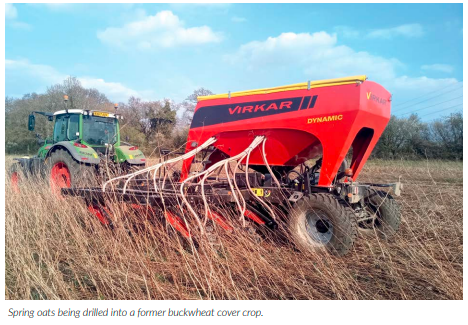
Having direct drilled Spring Oats Spring Barley & Spring Wheat, into a wide range of scenarios such as 5 ft tall buckwheat, oats, and phacelia cover crops, we were extremely impressed in how the drill dealt with the conditions. The ability to conserve moisture through No-Till in the Spring is becoming crucial. All our Spring crops that were direct drilled look extremely healthy and strong. Being able to drill the field using only 2.5 litres of fuel an acre and seeing a brilliant crop emerge knowing you have saved £25/30 acre over the previous system is a good feeling.
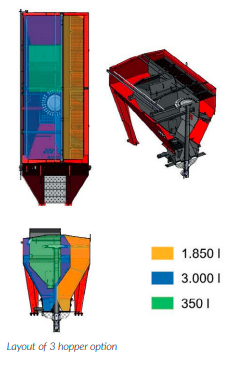
One Year on
Having now run our 6 Meter Virkar Dynamic DC for a whole season. It is clear to see that it has exceeded all expectations. It truly is one of, if not the most versatile & simplistic drill to operate. The results and interest we have received has been very encouraging.
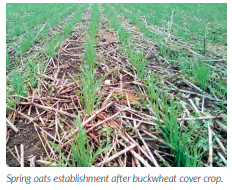
Moving forward with the uncertainty around what the future holds for our industry, I think more so than ever NoTill is an attractive avenue to go down. For us with our own farming operation the Virkar has allowed us to significantly reduce our establishment costs whilst maintaining yields.
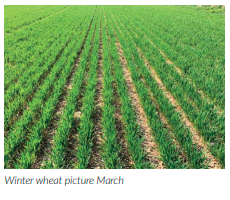
Looking ahead
We are already preparing for the Autumn demonstration season and hoping this time we can finally get the drill out and about on farms. We have had in the past few weeks and moving forward plenty of farmers visiting us seeing the drill first hand and having a tour of our farms and crops that have been drilled using the Virkar , they leave very encouraged by what they have seen.
They say a lot can change in a year, from seeing a video of the drill on YouTube, to now having drills out working across the UK. This machine is now a key part of our farming operation, by future proofing our business by ensuring we have the most cost effective and efficient system in place for crop establishment. We cannot wait to see where the next 12 months takes us.
New drill on the Horizon
New for 2020 is the direct disc coulter version of the drill. The Dynamic D has been a project that Virkar have been working on and thoroughly testing in tough Spanish conditions for 2 years.
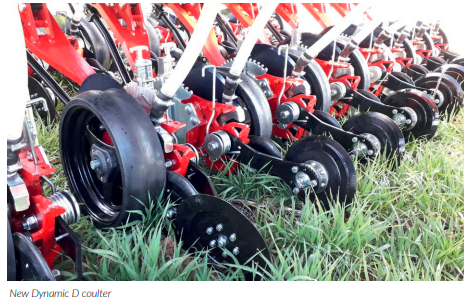
The coulter design means it can mount into the same frame as the Dynamic drill meaning you keep the modular design, widths from 4.5 to 7 meters will be available with either 19 or 25cm row spacings. The coulter arms are maintenance free, sealed bearings and bushed. The coulter design means you get 35cm of travel for contour following, on the move coulter pressure adjustment, and only one manual adjustment per coulter leading to quick set up time in the field. Again, the drill can be specified with 3 hoppers and various other options.
-

New Horizons For – Soil Research
The UK Soil Observatory (UKSO) is an award-winning and free-to-use online service that enables everyone to view soil datasets from nine research organisations. Russell Lawley (Geo-Properties and Resources Team Lead) from the British Geological Survey explains how the resource has developed to provide significant benefits to the agricultural sector, what information you can expect to find, and how UK farming will play a major role in soil research in future.
The importance of soil to the UK and its role in supporting our environment and livelihoods will likely be among one of the most critical topics of the next decade. There is still some way to go, but soilhealth and resilience are at the heart of the new agricultural policy, and research investment from commercial and academic resources is now rising. As scientists, we are continuing to sound the alarm about the important connection between soil health, sustainable agriculture and tackling the climate crisis.
Each year, more attention turns to the important relationship between soil and climate. The availability of soil data and the significant increase in technology in agriculture, has been key to the transformation of people’s perceptions and understanding of what goes on beneath our feet. The ethos behind UKSO is that no one should have to start with a blank map when it comes to soils information. When UKSO started in 2014, it had a tiny number of users, accessing a handful of archived soil maps.
As well as data from the British Geological Survey, other partners contributing include the Natural Environment Research Council (NERC), Center for Ecology and Hydrology, the James Hutton Institute, Cranfield University, Rothamsted Research, AgriFood and Biosciences Institute, Forestry Commission and Forest Research. What began as a platform that caters for a wide audience, aiming to provide everyone with free access to soils data for the purpose of educating people about soils, has quickly evolved for use by key industries such as agriculture. Today, we are approaching 190 online maps – many with regional, if not national coverage – and the data is being accessed by a wide range of users every week. This includes farmers exploring their options to move into viticulture or forestry, to agronomists and contractors checking the ‘lie of the land’ before considering new territories.
We provide mapping for England, Wales, Scotland and Northern Ireland with access to over 180 layers of data covering physical, chemical and biological characteristics including type, texture and grain size.
We are also providing more services for landscape domains and hydrology. Using UKSO, it’s possible to explore soil carbon, soil chemistry, pH, moisture, texture, type and agronomy, even upto-date surface slope data. The online maps can all be viewed on the UKSO platform ‘Map Viewer’ via mobiles phones, tablets, and desktop.

Many farm-mapping software applications can also use the web mapping services directly – for increased convenience, and better integration into farming systems. It also offers access to a number of resources through the UKSO website, including a series of quick-access static maps and exports from UKSO’s Map Viewer which are coupled with contact information and usage. It houses policies and guides for agriculture and industry and a selection of other useful apps and services which can help you find out more about soils in your area. These resources are only likely to grow in future as the service evolves.
What can you do with UKSO?
Over 180 layers of data can be viewed using the UKSO map viewer, which can be used to gather information about soil type, texture and grain size and a wide range of physical, chemical and biological properties. Users can also view the data within their own mapping software or apps. This includes Soilscapes, a 1:250,000 scale, simplified soils dataset for England and Wales which shows, in simple terms, what the likely soil conditions are at any point in the landscape by reference to one of 27 different broad types of soil. The users can benefit from extensive data about their soil chemistry as UKSO draws together data from the National Soil Inventory (NSI).
Other features include soil biodiversity data relevant to topsoil microbes and organic carbon concentrations, as well as topsoil nutrients, soil moisture and soil PH data from the Countrywide Survey (CS). This includes CS topsoil bulk density data, representative of 0-15cm, and maps covering Great Britain’s BioSoil pH data for a range of soil depths.

Planners and land managers can even benefit from surface data detailing for example, ruggedness, slope, and profile curvature derived from Ordnance Survey (OS) Terrain 50 elevation data, a dataset representing the physical shape of the real world. You can also access an archive of soilrelated resources, news and information such as soil apps, publications, events and research projects. Recent updates and future developments Right now, a key focus for UKSO is releasing more data for the agricultural sector. In January 2020, we launched new maps relevant to mixed-arable and pasture farmers directly relevant to ruminant health. The maps show regional levels and availability of the element magnesium in soil.
Low magnesium status (hypomagnesaemia) gives rise to tetany, or staggers, in ruminants. These conditions are remarkably widespread among ruminants in Europe, often with high fatality rates affecting business profitability. The data is designed to help understand the natural availability of these minerals in soils, and their likely uptake into plants. It can also inform the need to plan for supplementary feeds, sourcing grazing or forage from higher magnesium soils, or just for monitoring cattle if necessary. The research was funded by the Biotechnology and Biological Sciences Research Council (BBSRC) and the Natural Environmental Research Council (NERC). Both organisations have significant research areas devoted to food security issues. Using UKSO as a readily available toolkit for such data, will continue to ensure that industries like agriculture can benefit from high-quality research as quickly as possible.
How will UKSO adapt in future?
For agriculture, the upcoming Environmental Land Management scheme will see many changes in how we value our environment. With an increased awareness of soil health and resilience, there are likely to be inevitable changes to environmental regulations. A key part of future work for UKSO will be to provide an increasing array of data to support decision-making and compliance with changing environmental regulation. UKSO has already started to respond to such changes. We are currently trialling national maps of slope, so that agronomists who are preparing for changes to agricultural run-off regulations, can start to assess which parcels of land may be increasingly affected by the new rules.
We have responded to the renewed investment in peatland restoration by providing higher resolution peat mapping across Great Britain. The aim is to enable users to assess how much peat is present (or securely sequestered beneath it), assisting effective and responsible land management. Whilst traditional soil maps are still the most popular layers being viewed, demand has increased for datasets that answer specific questions relating to the land. We’re keen to ensure the service remains highly responsive to user feedback, who really are at the heart of what UKSO provides, and will fuel its future capabilities. Current feedback is pointing towards a greater demand for ever-higher map resolution and more frequent updates and that’s something we’re working hard to address.
Over the next 12-24 months, we anticipate that UKSO partners will be refining a number of other datasets. These include:
• improved texture descriptions for percentages of clay, sand and silt via laser-granulometry of 72,000 soil samples;
• Revised soil and sub-soil descriptions;
• New, very-high resolution, terrain datasets derived from Environment Agency Lidar survey;
• New trial models of soil erosion and soil compaction susceptibility;
• Improved options for using citizen science (the agricultural sector sharing their experience of their soils) and the potential for storing more data from soil sampling and field trials.
How you can help UKSO to grow
We are keen to continue learning about the needs of the agricultural sector and the specific needs of the direct-drilling community, who have already implemented changes to their land management to help improve soil resilience. We provide a contact form on the UKSO website (ukso.org/contact) where you can formulate your feedback and help to steer the development of the UKSO.

In particular, we would welcome thoughts from the industry such as:
• The soil or landscape datasets that you think should be in UKSO relevant to your sector, but might be currently missing.
• Soil or landscape datasets in UKSO that you find useful, but would like to see updated or improved, which ones and how.
• Suggestions for new datasets, or soil characteristics that would help you make better decisions about your soils, or insight into what your ‘go-to’ dataset would be for your work.
• Sources of new datasets such as drone, or smart-agriculture telemetry, that you think should be collated into UKSO.
Direct feedback will not only help to continue developing UKSO as usercentred platform, but insights like this can help to support future research. It’s important we work collaboratively to ensure that soil health is given the attention it deserves in the climate change debate.
UKSO is funded by the Natural Environment Research Council (NERC), and Biotechnology and Biological Sciences Research Council (BBSRC). For more information visit: http://www.ukso.org
-

Crimper Rollers
In 2017 the Rodale Institute talked about the use of crimper rollers in organic no-till. They said:

“In conventional systems, farmers can practice no-till by using chemical herbicides to kill cover crops before the next planting. Organic no-till, on the other hand, uses no synthetic inputs. Instead, small-scale organic no-till farmers use hand tools, like hoes and rakes. Largescale organic no-till farmers can utilize a special tractor implement called the roller crimper (below), invented here at Rodale Institute.”
How does a Crimper Roller work?
The roller crimper is generally a waterfilled (or solid) drum with chevronpatterned blades that attaches to the front of a tractor. More recently we have also seen them mounted on the front of drills as well. As the tractor drives over the cover crop, the roller crimper mows the plants down, cutting the stems every 16cm. The cover crop, now hopefully terminated, remains on the ground where it forms a thick mulch that suffocates weeds. Drills on the rear of the tractor then part the cover crop mulch, drill in seeds and cover them up to ensure soil contact. It generally happens in a single pass, saving vital time and energy for farmers. The cash crop then grows straight up through the cover crop mulch. But since we weren’t worrying much about glyphosate in 2017, the concept hasn’t gained much traction.

Timing is everything
The Rodale Institute also told us that cover crops must be terminated at just the right time at the end of their life cycle. This prevents them from a) continuing to grow after being rolled or b) going to seed and spreading. Therefore, unfortunately, one can’t use the roller crimper to simply mow down a field of unruly weeds midsummer—they’ll just grow back. You need to crimper roll when the cover crop reaches anthesis—when it switches from being vegetative to reproductive. In a rye or small grain, this will occur almost uniformly through the field and you’ll notice pollen shed. In vetch or legumes, which flower at different times, the rule of thumb is to roll when between 50% and 100% of the crop is flowering. At the time the Rodale Institute even offered plans for making your own. Since then we have seen a couple of companies in the UK produce their own front mounted crimper roller in the UK.
Fast Forward 3 Years
We are now looking at losing glyphosate, in fact it has already gone in some European countries. When we attended Agritechnica in November last year, crimper rollers were everywhere. It seems the appetite for their adoption, albeit not straightforward, has grown significantly. Especially in Europe. The big question being, is this something you will trial in the next 12-24 months? Here are just some of the other crimper rollers we saw at Agritechnica, some of which you may see at LAMMA 2021.



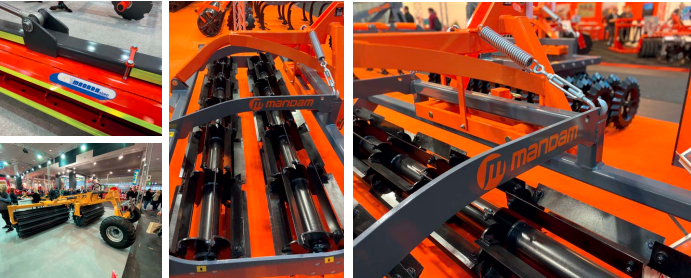
-

Farmer Focus – Neil White

The 2020 season in the Scottish Borders
Neil White’s farming is a constantly evolving system which includes a comparison of Mzuri direct drilling with a ploughcombi in this difficult season.
It was a long and wet winter here, crops struggled, but most made it through the relentless rain into a bright, dry but cold spring. When I started strip tilling, in early spring I had to defend my winter crops to my now, late father. He never switched off the part of his psyche that defined good crops by green lines on brown soil. Come April he would admit that the crops looked good and by May, that they had great potential. ‘You need to keep your faith’ I would say as I believe strip-tilled crops are slower to get going in the spring. This year he would have given me a hard time as things did look bad, but most crops have recovered and some look to be full of potential again. I did however take out my second wheat, sown in great conditions just before the weather broke, and patch some wheat which was ploughed, drilled then flooded. The poorest crop left in is some Pearl winter barley, it is not a resilient crop at the best of times and with the NVZ not allowing autumn nitrogen on cereals I do struggle to get a good crop going into winter.
Wet weather resilience of direct and combi drilling
It has been very interesting to see how different fields have coped with the excessive wet weather we have had. It is very noticeable that the fields strip tilled the longest recover quickest. I am trying to work round my farm correcting any drainage problems, feeling this is something I have neglected in the past. This is based on a desire to look closely at what I expect from my soils. Reduced tillage has already helped the soils recover their water carrying capacity by keeping them aerobic and the fauna alive, so I must keep the drains running. In the fields where remedial work is done, I still plough to level the ground for spring crops and the difference this year between ploughed and strip tilled is very noticeable. The Mzuri drilling looks far better. It’s funny that if the roles were reversed people would use it as a reason not to strip till.
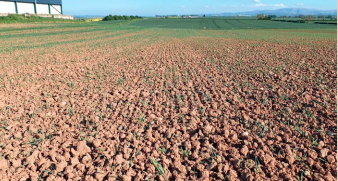
Direct drill and plough-combi comparison
I have Diablo spring barley and Canyon spring oats which, unusually, were both direct drilled and plough-combi drilled. This makes an interesting comparison. In the plough-based system the extra working of the soil as it dried out has been a massive problem this year as it has caused some very uneven crop emergence. The more I did to the ground, the more time and money I spent, the worse the crop looks. The wettest, very quickly became the driest. I walked over my ploughed and sown oat field and it was like gravel, dry and crisp and it stayed that way for 4 weeks after sowing until the rain came. In a perverse way it does help convince me to use the Mzuri drill on all my spring crops as those crops look far superior. They were drilled into over wintered stubble, untouched, no cover crop but with weeds sprayed off, the undisturbed soil retained the moisture and the crops never looked back. I put pictures on my Instagram ‘Everything is Greenknowe’ and a video on Youtube that I would suspect were fake if Mzuri or any manufacturer posted them.

Deeper front leg setting pays of
I ran the front leg a little deeper on my drill this spring at around 7inches and the coulter 1.5 to 2 as I was worried the cold soil maybe needed more loosening and lift. I think this paid off as the moisture was accessible around the seed and rooting area and the placed fertiliser gets it off to a good start. I didn’t have a dual tank on my original Mzuri and it worked well but the ability to place fertiliser in the new machine has made a very noticeable difference this year.
I often discuss with others the various tweaks or different approaches we use to fix problems that can occur with different systems and it is interesting to see what direction people choose. I have tried to resist buying additional equipment as I believe in the simple system. Lots of chat is about sub soiling and light disking or cultivation to remove problems, which I resist out of necessity as I do not have the tractors or people it requires at peak times. My approach now is to look backwards and think more about prevention, and while this is not a new thing it is a mindset I am trying to adopt.
I don’t think about what the ‘system’ can cope with, rather what can the ‘soil’ cope with. I look at the baler, muck spreader and trailers and consider whether it could be done a lot better, and after sowing for a neighbour who runs a CTF system I would love to be able to try that here. I can see myself continuing to chop more and more straw and restricting muck spreading to only suitable conditions, leaving it in the midden if need be. I used to only look at the benefits of these but now I also consider the damage that could be caused.
Straw rake bought but no grants in Scotland
I have however treated myself to a Mzuri Rezult straw rake this summer. This piece of machinery, like my drill, are bought purely on merit as we have no grants available to us this side of the border. Being a tight Scotsman, only 6 miles from the border, this really bothers me and through my involvement with NFUS any opportunity I have to lobby ScotGov I bring it up. I cannot believe that given all the rhetoric from the Scottish Government, the ‘all stick no carrot’ approach is the route they choose!
I still bought the rake however. I had been hiring, very cheaply, from a neighbour and I do one or two passes on rape stubbles prior to sowing. I found with hiring I haven’t been able to get two passes 10 days apart and I feel it’s unfair to take it to my contracted ground as it is very stony. I like this kit, despite the cost, because I do find given the weather, it halves the number of slugs and viable eggs and it does chit seeds in the top layer. I have asked the AHDB if they research this, but I am unaware if they have.
Prevention is better than cure
I have seen it written that we should ‘try to avoid singular solutions to singular problems’ so I am aiming for prevention, not mechanical cure. I like my local machinery dealers, but they do drive newer cars than me. I did manage to get rid of a spare 3.5m Kuhn power harrow we had had for years though so it is a one in one out policy on machinery. I am considering buying in compost for some of my stiffer ground. The geographical area I am in does not lend itself to cheap opportunities for these inputs so we will see. I hear a lot about the benefits it can bring so I think it would be worth pursuing and giving a try.
Future challenges
The farm next door to me is becoming available for contract farming and being next door, I was always going to be interested. This area is one of the most competitive in Scotland for this type of arrangement so it will be difficult to compete. The fact that I am considering taking more on and bidding what I think is a very competitive figure starts with the day I changed my system.
I cannot fail to mention the C19 pandemic, I hope you are all safe and well. I have to say that we are always aware how lucky we are, the job, homes, rural location and control we have over our social environment but never have we been more thankful than the last 3 months. I hope British farming comes out all the stronger in the end.

-
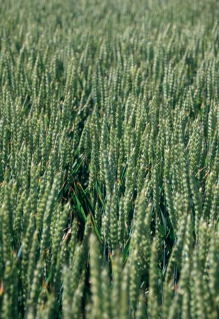
How Seed Breeding And Knowledge Integration Will Carry Growers To A More Sustainable Future
With losses in agrochemistry continuing, more variable growing conditions predicted and the need to move to more
sustainable production, individual choices around seed will have an increasingly important impact on crop production
efficiency, industry specialists believe.The most important day of a crop’s life is the day the seed is sown and this is likely to be even more important than ever in the future, says agricultural innovations consultant Dr. Tony John. “Whilst precision farming and robots will do much to improve the efficiency of our production in the future, genetic development will undoubtedly do the majority of the ‘heavy lifting’ in meeting the demands of sustainable and responsible intensification in the future,” he says. “Whilst much of this will be down improved traits and performance available, a lot will be due to the knowledge and data associated with the seed chosen.”

With over 25 years experience in international agricultural research, director level positions in commercial agronomy and a current role advising the UK government’s Department of International Trade (DIT), he believes integration of biology and data at farm level will become increasingly important. “Seed and genetic development will have a fundamental role to play in helping producers meet the challenges of the future and will go a long way to replacing the level of inputs used to date. “Genetics have the opportunity to replace the sprayer in its current form in many instances in the future, especially when used in combination with the other technologies that are, or will become available, as Agriculture 4.0 develops in the future.”
Data, or more specifically, integrated data, is king, he believes “Systems that collect data and integrate it across all our farming operations have the potential to radically improve our production efficiency. “Such technology also offers the opportunity for the transfer of knowledge at a scale we have not seen before. “But at the heart of all these exciting developments lies the fundamental performance of what we sow in the ground in the first place and this is undoubtedly the next frontier of development as new breeding techniques speed up the process of traits from lab to field.”
Helping growers mitigate against future challenges KWS UK knowledge transfer manager Dr. Kirsty Roberts agrees saying significant progress is being made in the development of traits and characteristics needed to help growers mitigate against the challenges of the future. “Sequencing of the wheat genome means we can better identify the genes controlling specific traits and with marker assisted breeding and genomic selection, we can increase the speed and efficiency of breeding.

“High throughput phenotyping – inside in glasshouses and outside by via drones or tractor-mounted – is transforming the way breeders work. “Across the globe, KWS is now using robots and flying drones to continuously collect data in the fields and to evaluate this using artificial intelligence (AI). “Ongoing investment in this area means we are not only improving the amount of data we are now capturing it also means we are able to analyse it much more efficiently than before. “This in turn produces more accurate and faster breeding results plus an improved development process overall.” So much so that Sowing for Peak Performance (SPP) is now a fundamental breeding objective that underpins all KWS genetic development now and into the future, she says. “SPP is based on the premise that 80% of what your crop can deliver is locked into the seed you buy and its match to your own individual growing conditions.
“Whilst you can fine-tune this with the correct Nitrogen levels, using fungicides wisely to protect it from disease and paying attention to basic management principles, once you’ve made your seed choice your production potential is largely set. “This seed choice is a primary decision that every grower makes every year and it will become increasingly important in the future.”
Soil and cultivation method key
Seed choice could interact with cultivation method and soil management far greater in the future, she believes. “The less time you spend applying agrochemicals and fertilisers in the future, the more you are saving on labour, diesel and machinery wear and tear and, ultimately, replacement. “The less time and money spent on managing crops the less time you will hopefully spend in the tractor cab. “Less travel means less potential damage to soils and less time and money spent trying to correct the compaction problems associated with multiple wheelings and carrying out operations is unsuitable conditions.

“For example, varieties that mature earlier result in earlier harvesting which in turn means you have more chance of avoiding the worst of the autumn weather and more time to prepare land properly in a manner that reduces soil damage to a minimum. “It also gives you a greater choice of crop options, whilst varieties with greater flexibility over drilling date avoid the problem of potentially undrilled fields that could be exposed to soil erosion over the winter. “In the future, we could have varieties less reliant on specific seedbed conditions with the real possibility of seed optimised for zero and minimum tillage operations.” Tony John believes systems of production that are kinder to soils than current ones have to be a priority.
“Reducing compaction through excessive machinery travel is key but we will also have to focus on cultivation practices that are kinder to soil and nutrition practices that build the organic content,” he says. “This could come from smaller machinery for applications rather than less travel or more vigorous varieties exerting greater competition against weeds which in turns reduces the need for heavy duty cultivations. “Building up the nutrient status of the soil could also come through greater understanding the interaction between varieties and the root biome.
“Developing a wider range of crops that fix N from the atmosphere will be another important contribution of enhanced genetics in the future, as will understanding more about soil’s role in carbon capture.”
Significant cost benefits
KWS product development manager John Miles says functional traits such as disease resistance, standing power and earlier harvest date can already simplify management and reduce production costs to a much greater degree than many currently believe.

“Secondary factors such as savings in diesel, labour, machinery replacement and better soil condition can multiply the benefits many times over and help producers meet the requirements of integrated pest management (IPM) demands and environmental legislation much easier. “It’s too easy to look at good standing power, for example, and think it’s a trait that might save you a bit on growth regulators, but when you look at the risk with regard to the potential effects of lodged crops, the cost benefit implications are much more significant. “There are the initial saving on PGRs, but with lodged crops, costs can escalate per hectare when you start to factor in extra diesel, labour and machinery hours. “One of the easiest savings to be made will be trimming fungicide rates according to risk which is where using varieties with high levels of disease resistance can be worth up to £20/ha, he says.
“With sprayer costs being in the region of £10 – 15/ha and a day spent spraying likely to cost you around £120 in direct labour costs, the economic implications of reductions in applications can be highly significant.”
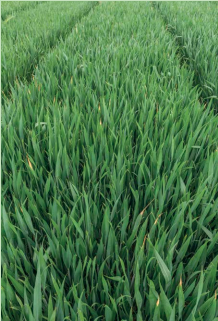
“Focusing on what a variety brings to your management in terms of functional traits alone could produce costs benefits equivalent to up to 20% of yield.” This is borne out by the £231/ha additional benefits estimated for KWS Extase from combined potential savings in fungicides with premium retention and all the other benefits that go with these, he explains.
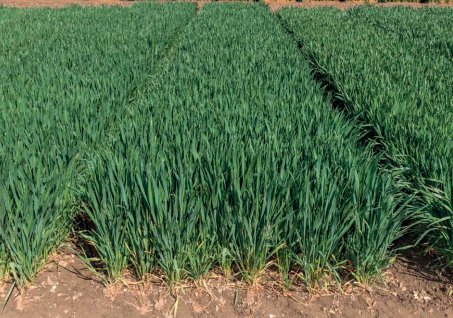
“This is before factoring in the cost advantages of earlier ripening and earlier harvesting and its effect on timeliness throughout the critical autumn period. “At approximately, £75 – £80/ha for seed on-farm, this suggests around a 300% return on investment is possible from functional traits alone before higher yields are accounted for. “Whilst developing new varieties and producing seed is always costly and time consuming for breeders, these gains represent sizeable opportunities for growers.
These gains are likely to be even more in the future.” New trials look at varieties and cultivation methods A new trial set up by KWS aims to identify which varieties perform best in min-till and no-till situations and compare this to conventional cultivation methods. Over 20 popular winter wheats are being tested at a range of sites with early indications suggesting clear differences between different vareties, says John Miles. “Generally the individual varieties within the tilled plots were looking much more even by early summer compared with the no-till plots with top performers and faster maturing varieties such as Extase and Parkin looking visibly further ahead than others.

“In contrast the ones where no-till was used were more inconsistent within plots with some showing significant holes in the cropping which would result in yield loss. “Crop density was probably around the 550 ears/m2 in the tilled plots. Due to challenging establishment conditions in autumn 2019, the no till plots saw significant plant losses which look to have resulted in ear numbers below 300 ears/m2 Although full results will not be available until after harvest, an early summer assessment suggests the varieties doing the best are the ones with the highest tillering ability and strong early speed of movement in the autumn allowing better plants to establish, he points out. “The stand-out varieties in the no-till plots are Zyatt, Extase, Firefly, Parkin and Kerrin – all of which established well and kept ahead through the Spring but were also noticeably more consistent across their plots than many other varieties. “Whilst all varieties were grown at 350 seeds/m2 seed rates of 450, 550 and 650 seeds/m2 are also being looked at to see if there is a correlation between variety type, seed rate and cultivation method.
“There’s a real possibility that in the future we will be able to identify not just the best varieties to grown in a no-till or min-till situation, but also the most effective way to grow them in terms of drilling date, seed rate and likely agronomic interventions.”
-

What Should The Agronomy Service Of The Future Look Like?
Written by Richard Harding, Procam
In a year where recent events have triggered a rethink in many areas of our lives, one major question is where to get advice that aims to future-proof the farm business for the long term.
Having been involved with farms practicing conservation agriculture (CA) or regenerative agriculture (RA) for over 10 years, it has increasingly felt like there is a disconnect between what the farmer requires from an agronomist and what the existing agronomy model offers. As Mark Dewes, a recent Nuffield Scholar, wrote in his article for the last issue of Direct Driller, “out-sourcing of pesticide management to agronomists has contributed to a disengagement of farmers from their own agronomic decision making”. It also assumes a chemical is likely to be the primary solution. I would go further and say UK agriculture and wider society is obsessed with buying the solution to a problem rather than seeing themselves as being the solution.
One topical subject, for example, is Cabbage Stem Flea Beetle. How many farmers have you heard say “Flea Beetle is a real problem on my farm and there are no longer any reliable chemical solutions”? An alternative perspective would be, “We’ve grown oilseed rape too often as an industry and that is causing an explosion of Flea Beetle. So, I’m going to change my rotation”. Of course this is easier said than done, but it drives home the point that we are the problem as much as the solution.

Before continuing I should confess to being an eternal, yet realistic optimist in relation to the future. I firmly believe we need to take more inspiration from nature and acknowledge that nature holds within it many sophisticated solutions to the agronomic and environmental challenges we face.
Rather than dwell too much on the problems we all face – loss of chemical actives, loss of direct financial support for agriculture, climate change, etc. – let’s consider how an agronomy service of the future can be part of the solution.
In our solution we need to go beyond organic, stop demonising a particular production system or label, and keep an open mind as to where we might find the answers to the challenges we face. Being the solution is about having a future-proofed and resilient farming system, or, more appropriately, a future-proofed rural business. This acknowledges the diversity of a typical modern farming business.
CA or RA are longterm systems and the emphasis needs to shift from yield and margin over input costs to maximising the annual net farm income (NFI), rotational gross margins or even straight return on investment (ROI). While we are comfortable with the terms fixed and variable costs, sometimes we can obsess about variable costs because they are very visible. We can tend to ignore fixed costs because they are more hidden. The term “fixed” gives the perception they are more difficult to change than is the reality. It just requires more thought and planning.
For example, a New Zealand dairy grazing system can outperform a UK conventional all year round calving housed system when viewed from a ROI perspective. However, as always, things are more complicated than that. The dairy system example relies on the assumption that land isn’t the limiting factor.
Before considering the agronomy service of the future we must consider how research is traditionally disseminated. Currently it is largely top down with research predominately coming from research organisations and government bodies. CA and RA require a different approach. Peerto-peer and a bottom up approach is more suitable due to the longer-term nature of the research required and the fact that there is less commercial interest in the solutions which benefit the farmer and consumer most.
One organisation working hard to deliver research relevant to a more resilient farming system is Agricology. Agricology is a network whose purpose is to share practical information on sustainable approaches with farmers and growers. It is a free platform, open to everyone. This is a great example of a less top down approach to knowledge transfer. Organisations such as Groundswell have done much within the industry to facilitate CA and RA knowledge transfer through their annual conference in Hertfordshire, packed with inspiring farmers from all over the world. BASE (Biodiversity, Agriculture, Soil, and the Environment) is another great example of a farmerled organisation promoting peer to peer knowledge transfer. All these organisations are doing incredible work. So how do we translate all this knowledge into a more resilient and viable farming system moving from a niche to mainstream UK agriculture?
The farmer, having amassed all this knowledge of alternative systems, still requires – at the beginning at least – the skills of an agronomist who understands and has experience ofCA or RA. A common comment at the Groundswell conference is, “This is an inspiring event but how do I now find the right advice to support continual system change on my farm”? It is hugely important to support the farmer on the ground during a transition from one system to another. Changing a system also changes the agronomic requirements: as the system evolves the weekly/ fortnightly crop walking becomes less essential, being replaced by a more strategic monthly/ quarterly visit, or advice could even take the form of an annual review depending on the confidence of the farmer. One of the biggest benefits of working with an enlightened agronomist for anyone implementing change is to provide the farmer with support and reassurance when surrounded by peers who may be critical of some of the farming practices they are undertaking.
This approach based on natural systems is something that will require a different approach to risk, financial planning, and resilience. We should be under no illusion: these systems certainly won’t be for everyone. The critical point is that the overall long-term farming goals should be woven into, and will affect, every agronomic decision that is taken. As every situation is different, one size definitely doesn’t suit all.
Whatever the situation, for the agronomist of the future to exist we need to acknowledge two key changes. We must first truly value the agronomic advice in the same way that the advice of a land agent, accountant, or other professional is valued. As with these professional services, the cost is more than repaid from the resulting benefit. Replacing a chemical solution with more cultural methods of control will add management time, transferring the value from a product to a professional’s time which must still be paid for. However, the savings outweigh the cost.
One potentially contentious systems approach example is disease control in oilseed rape (OSR). In 2018 a CA approach to growing an OSR crop involved the following principles. Firstly, a long rotation was a given, direct drilled OSR with companion crops. Secondly, reduced fungicide and herbicide was used when compared to the farm standard, with judicious use of the BASF/AHDB sclerotinia monitoring tool. This resulted in a slightly higher gross margin, up £62.50/ha when compared to the farm standard, with an increase in overall net margin of £193/ha for the CA systems approach.
However, the management time involved was greatly increased when it came to sclerotinia monitoring and increased time crop walking compared to the standard approach. Had the weather changed suddenly and sclerotinia significantly affected yield this improved margin could have easily turned into as significant a loss. [Is it worth saying something here about long-term research on such systems, that shows that such losses are, over time, absorbed, and profits overall increased, but that a long view is needed, that is able to manage short-term losses? And so a factor in choosing such a system is whether the business is in a position to take the long view, or whether it has reasons to have to focus on minimising potential short-term loss?]

To conclude, the agronomist of the future needs to be much more deeply involved in the farm business than may traditionally have been the case. Providing advice on both variable and fixed costs alongside long-term strategic planning. To future proof the farm business will require regionalised bottom up research facilitated by the agronomist, seeing chemistry as the last resort. In addition to the research sources described above, another form of research is a facilitating of physical and financial benchmarking of farms against their immediate peers who are operating similar systems, where no subject is out of bounds in the pursuit of truly sustainable progress. With such facilitation the agronomist of the future provides support, generates collaboration, and furthers research, benefiting all parties involved and pursuing lasting ecological solutions.

-

Drill Manufacturers In Focus…
DESPITE EXTREME WEATHER OUR CROPS LOOK FANTASTIC

Jeff Claydon, who developed the Claydon Opti-Till® System, discusses the progress of winter and spring crops on his family’s farm in Suffolk and how the TerraBlade inter-row hoe is used in conjunction with herbicides to help minimise weeds and diseases. This article was written during the first week of May, following the wettest winter since national records began in 1910 and a very dry spring.
The COVID-19 situation has made consumers much more aware that food is one of life’s most basic requirements and not something to be taken for granted. It has also highlighted the complexity of the finely tuned supply chain which delivers a continuous supply of high-quality food to retailers’ shelves for them to purchase. This presents the farming and food sectors that have Farm Assured standard and Red Tractor status with a real opportunity to better inform and educate them on this critical topic.
Continuous pressure from the supermarkets over many decades has forced food prices down in real terms, so as an industry we have had to respond by cutting costs and becoming more productive to remain profitable. But that has become increasingly difficult to do and going forward the situation will require careful consideration, because there is no point in chasing a low-cost system if yields are compromised as far more will be lost than saved. With profit margins under pressure, a shortage of skilled labour and more frequent extremes of weather, the financial risks attached to farming have increased substantially. Never has it been more important to operate an establishment system which is effective in all conditions and provides sufficient capacity to allow crops to be drilled at the right time, in the right conditions. Without those attributes it impossible to produce high yields and generate the financial returns necessary to farm profitably and sustainably.
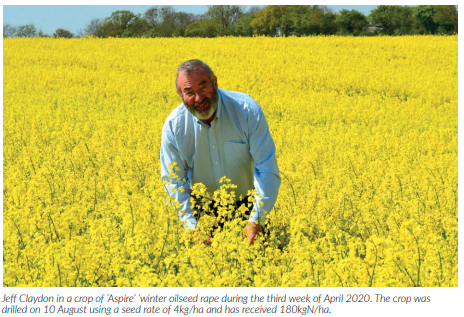
A challenging season for many
This season’s extremes of weather highlighted the drawbacks of moving too much or too little soil. Many who relied entirely on a plough-based or min-till system are now questioning the relevance of multiple tillage operations, whilst the serious pitfalls of a no-till approach have been very evident. In both cases, less-than-ideal establishment, poor germination, and less effective weed control will ultimately reduce yields and profitability.

I am pleased to report that this has not been the case on the Claydon farm, where the Opti-Till® System provides much-improved timeliness and flexibility. All our crops are established with a 6m Hybrid T6c which comfortably averaged 40ha a day, so all 280 hectares of winter wheat, beans and oilseed rape went in as planned in just 70 hours. The winter wheat was in the ground by 31 October and the last winter beans were drilled on 19 November. Wider crop rotations, combined with a 50:50 split between wheat and break crops, have helped to spread the workload. After harvest we had plenty of time to carry out an effective stubble management programme with our 15m Straw Harrow and 6m TerraStar. This encouraged multiple flushes of volunteers and weeds, any remaining green material being killed off with a single application of full-rate glyphosate in October/November. For spring crops this left fields clean but with a shallow layer of surface tilth which provided ideal conditions over the winter and prevented the surface from capping.
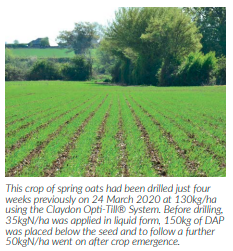
We drilled the remaining 46ha of spring crops directly into this perfect growing environment at the end of March. Following a week of dry weather our spring oats went in on 24 March, the day after ‘lockdown’ started in the UK, even though the soil temperature was just 5.5°C and significantly below the 7°C average for January. In the four weeks that followed we had just one rain event and the 2mm which fell evaporated quickly. In early April there were more frosts than during the whole of the winter and these, together with very cold winds, stunted the oilseed rape.
It is much shorter than normal, but prolific amounts of flowers and seed pods are evident, so plenty of sunlight will penetrate the canopy and hopefully help to ensure good yields. Without Opti-Till® our crops certainly would not be at the stage they are now. The system greatly improves timeliness, reduces establishment costs by up to 80%, creates well-structured, supportive soils, encourages high worm populations, promotes biodiversity, and ensures excellent drainage. This results in sustainable, high yields, greater resilience to extreme weather events, numerous environmental benefits, and improved profitability.
The key is the Hybrid drill’s patented leading tine which lifts and aerates the soil, creating fissures that alleviate localised compaction, improve drainage, allow the soil to absorb heavy rainfall without capping and provide space for strong rooting structures to develop. The separate seeding tine places seed within the band of soil which has just been lifted and loosened, providing ideal conditions for rapid emergence, and encouraging strong rooting structures to develop.

Drilling seed in bands provides an ideal environment in which worms thrive and because their burrows and capillaries are left undisturbed this aids drainage and water movement throughout the soil profile during growing season. Plant roots are also left largely undisturbed, which adds to the soil biota and improves its structure, organic matter depletion is minimised due to nominal soil disturbance, while moisture and nutrients are preserved. Setting any drill up correctly according to prevailing conditions is always important for optimum results, but it has been critical this season.
In the autumn it rained almost every day and so we slightly reduced the working depth of the front tines to prevent the tractor’s wheels from slipping excessively in the extremely wet conditions. This also helped to maintain a reasonable forward speed and achieve enough soil shatter, without bringing wet sticky soil to the surface. In the spring, when the soil had dried out on the surface but remained wet underneath, we also ran the leading tine 6cm to 8cm below the seeding zone to draw up humidity into that area.
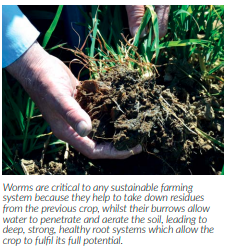
Despite atrocious weather, with only three rain-free days from October until mid-March, crops established well and when I went around the farm this morning even the headlands looked exceptional. Our customers throughout the UK and overseas have reported that the Opti-Till® System has also produced excellent results. One of them called me to say that they had operated their 6m Claydon Hybrid around the clock to make best use of a period of dry weather in the autumn, drilling 80ha in a 24-hour period without the need for any form of precultivation.
Tidying up in spring
With all our winter and spring-sown crops in excellent order we have been making extensive use of our Claydon TerraBlade, a low-cost, mechanical method of controlling weeds growing between the rows in all combinable, band-sown crops. Keeping these areas clean during the early stages of crop growth reduces competition for nutrients, light, air, and water, enabling the young plants to grow strong and healthy, improving the availability and utilisation of soil nutrients and ultimately boosting crop yields.
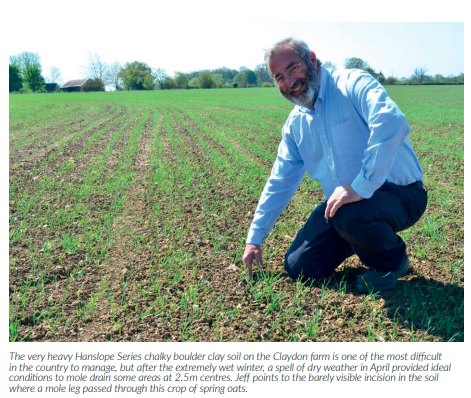
The TerraBlade is an additional weapon in the agricultural industry’s weed control armoury at a time when the efficacy of some herbicides is decreasing, and the cost of control is increasing. It eliminates weeds reliably, safely without using chemicals and clears up any that were missed by agchems, or where such products cannot be used. This greatly reduces the return of weed seeds, the overall weed burden and the risk of more resistant types developing.
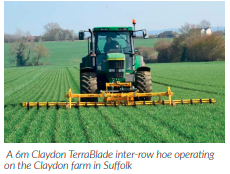
On farms that drill early, crops may be sufficiently well developed in the autumn to start using the TerraBlade then, and the operation can continue in the spring whenever soil conditions allow, up to the stage where the crop might be physically compromised by further passes.
A trial by Agrii UK in an area where grassweeds had become problematic after years of conventional crop establishment found that a combination of Claydon stubble management and herbicide programmes achieved an exceptionally high level of control. In the area which received no treatment, Agrii researchers counted over 900 blackgrass seed heads per square metre. In the surrounding area, where a combination of ag-chem treatments, Claydon Straw Harrow and Claydon TerraBlade passes were used, the number was just 13/m2, a 98.5% reduction.
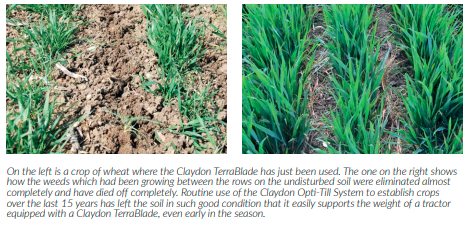
The benefits of the Opti-Till® System are clearly resonating with farmers and this has been reflected in the high number of enquiries that we have received in recent weeks as many decide to revaluate their approach before the autumn. The COVID-19 lockdown meant that we were unable to welcome the hundreds of existing and potential customers who normally visit our open days in May, so this year we decided to film a virtual open day so that we could highlight just out well our soils and crops are looking. You can view it by visiting the Claydon website (www. claydondrill.com)
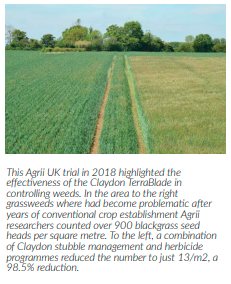
To learn more about the Claydon Opti-Till® System and how to improve your farm’s performance contact your local Claydon dealer, go to www. claydondrill.com or call the Claydon office on 01440 820327.
-

Farmer Focus – Andy Howard

A few weeks ago I was really falling out of love with growing wheat. Like all difficult times you get the chance to re-assess what you do and I believe we need a complete re-think of wheat growing in the UK. Since my last article in the December edition it continued to rain, about 680mm between the end of September and the beginning of March. The deluge gave us a final goodbye on March the 7th by raining all day and flooding the farm. It has been a difficult time watching crops go under water and springs appear and kill patches of wheat.
Now we have having a very dry spring and crops are looking stressed due to poor roots systems. Please put your hands up if you farm on heavy ground and are relaxed about planting high seed rates of wheat at the end of October this year? Then (if its survived the winter) apply a fungicide 4 times to keep out disease, also apply large amounts of nitrogen fertiliser to try and meet milling specifications and finally spend £100/ha on herbicides to try and fail to control grass weeds. I cannot imagine many hands being raised. (apart from the input suppliers).
Thinking of wheat bushes with 100 tillers
While drilling spring crops I was listening to a podcast by John Kempf where he was interviewing Dr Norman Uphoff about The System of Rice Intensification. In developing countries, they have re-designed Rice cultivation with dramatic yield increases and lower input costs. This has been done by planting very-low seed rates, so each plant has plenty of room above and below ground and so rooting and tillering is increased. They use as much compost at planting as possible to improve the soil biology. There are other changes they made but these two mentioned are the most important here. Since their success with Rice they have transferred the theories to other crops including Wheat.

So, I started to think how we could adapt this system to the UK and remembered about the Marc Bonfils method of wheat growing where he was getting remarkably high yields with similar techniques. I also remembered a picture of wheat shown by Neil Fuller where he had planted wheat at 10 plants per square meter and the plants had 100 tillers. In summary I believe we should be planting wheat as early as possible with very-low seed rates. At the same time apply compost or an extract at planting.
This will give us wheat bushes with large root systems and many tillers which will find nutrients from deep in the soil and so require a lot less nutrition. Due to the open canopy disease will be less of an issue. This would ideally be on an already established permanent legume living mulch.

Marc Bonfils was achieving 15t/ha with a similar system with very low inputs. So why didn’t it take off? My guess is scalability. The open canopy would give weeds more of a chance and they were probably hand hoed. With Weeder Robots on the horizon, interrow hoes and hooded sprayers this hopefully will not be an issue. I am also hearing people screaming “what about BYDV or Wheat heading in December?” My answer is a large healthy plant will not be attacked by aphids and variety choice is key. A lot of modern varieties have spring genetics within their genome. A variety with winter only genetics would have to be chosen.
Will it work? I do not know but it cannot be any worse than the direction wheat growing is going. I think we need to try. How good a wheat crop looks around here is directly correlated to how early it was drilled, the earlier the better. Marc Bonfils was planting his wheat into his standing wheat crop in June as wheat tillers best at 20-25 degrees Celsius. The table below shows the differences between the Bonfils Method and Conventional
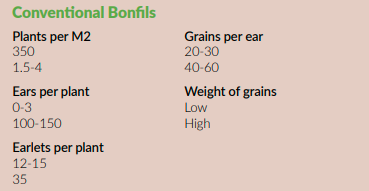
The spring crops overall established well. They are looking good considering the conditions, but they are rushing through the growth stages. We have 5 different intercropping trials in our spring crops. (pictures attached).

The bean intercrop trials are with PGRO. We are testing undersowing clover in beans, different row configurations to see if there any differences in disease and a copy of the bean/ oat seed rate ratio trial we did last year. With the Diversify project we are trialing different rates of oats mixed with either peas or lentils and see how low we can go and still get a good enough scaffolding to reduce lodging. All these trials should hopefully give us some valuable information for next years growing season which will hopefully be better than 2020!
Happy harvesting.
-

Water Focus – Affinity Water
New technologies for understanding the benefits of regenerative agriculture and cover crops
Sophia Burke, AmbioTEK CIC, Mark Mulligan, King’s College London and Shaun Dowman, Affinity Water

Affinity Water is a drinking water supply company in the south-east of England. Supplying water in an area designated as being under ‘serious water stress’, it is critical that the company manages its water resources sustainably now and into the future. When it rains, land management can have a big influence on the quality and quantity of water that reaches groundwater aquifers. Given that much of the land perched above the aquifers is agricultural, there is a great opportunity for water companies, like Affinity Water to work with farmers to better understand and enhance the benefits that good soil management can have for the water environment. Good soil health delivered through regenerative farming, no-till or conservation agriculture can offer many benefits such as increased water retention, improved infiltration, reduced run-off and less pollution.

Measuring the impact of soil management practices on the water environment can be difficult, especially when attributing effects upon, and rewarding, the actions of individual farms across a large catchment, but through field trials, Affinity Water have been developing their knowledge and understanding in this area. Affinity Water are utilising new technologies developed at King’s College London and installed and maintained by AmbioTEK CIC. In a number of small-scale field trials they aim to understand how regenerative agriculture and different cover crops can help reduce runoff and nutrient loss as well as the influence they have on infiltration and potential aquifer recharge.
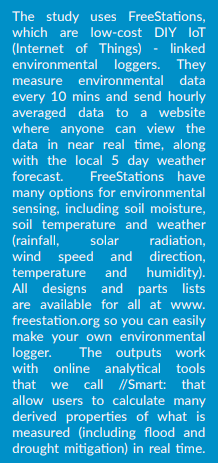

The measured soil moisture and rainfall for one of the sites is shown below (Figure 1). There is a clear soil moisture response to the measured rainfall, followed by a relatively rapid decline with drainage and crop water use. Measuring these parameters in real time on different cover crop mixes and comparing it to a plot left bare builds an understanding of the effect of cover crops on infiltration. Interestingly, the results from this year’s trials highlighted that very little water was ‘lost’ through evapotranspiration in the cover crop plots over the autumn/winter months. It is sometimes assumed that cover crops may ‘compete’ with the interests of a water company and will use water that may otherwise be directed down into the aquifer, but this study suggests that this is not the case.
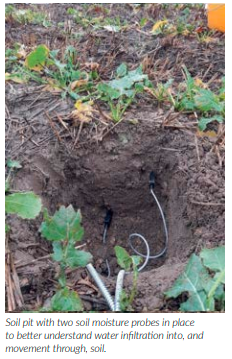
The results also highlight that a mustard/ oat cover crop may allow greater water infiltration when compared to a straight radish mix (Figure 2). Further work is needed to confirm this.


How can new IoT-linked monitoring technology be used by farmers in the future?
Landscapes of the future will be intensively monitored in real time by farmers, companies, environmental authorities and governments with the aim of improved management and early warning to the benefit of all. Internet-connected technology is already transforming our knowledge of soil, water, climate, food production and the production of public goods (ecosystem services), which are nature’s contributions to people provided by farmland. Regulators and legislators are looking to incentivise management for improved provision of public goods, such as clean water and carbon.
However, there are still challenges in understanding which public goods land provides to whom, how this varies spatially and over time and how management practices (such as tillage, choice of cover crops) impacts upon them. We can understand a lot by combining satellite data with computer models but these need to be combined with networked on-the-ground sensors such as FreeStations, collecting sitespecific detailed data.
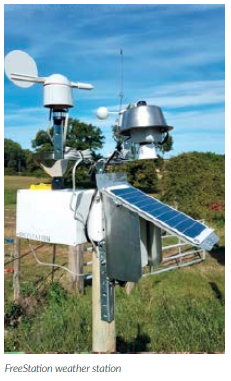
Land provides both private goods for the market through the produce grown but also public goods in the ecosystem services provided. For example, changing land management will affect how much of the rainfall can infiltrate for use by the crop, and how much is ponded on the surface, which generates runoff, nutrient loss and soil erosion, and can also contribute to flooding downstream and to dry season flows. Since these services have real benefits to local, downstream and even global populations, public funds can be put to sustaining their provision whilst private funds underpin the markets for farm produce. If internet connected sensors, coupled with satellite remote sensing can quantify how land management on a farm mitigates flooding or drought downstream, or provides clean water, carbon or any other valuable ecosystem service this can contribute to more targeted payments for environmental land management
What do farmers want to monitor / measure on their land?
At present FreeStations measure soil moisture (with multiple probes at different depths), soil temperature, water quality and weather (rainfall, temperature, solar radiation, wind). Are there other variables you consider critical? If you are interested in installing or even building a DIY FreeStation, please check out www.freestation.org or contact us at sophia.burke@ambiotek.com.
-

Investment In Manufacturing And Knowledge Is Helping Make Ammonium Nitrate Fertilisers Fit For A Carbon-Focused Future
The carbon footprint of all agricultural practices is under the spotlight as never before, and with Nitrogen fertiliser one of the mainstays of production, it is not surprising much debate continues around the use of manufactured N.
Navigating through the often conflicting demands of population growth, food production needs and environmental requirements is far from easy, says Dr. George Fisher of CF Fertilisers.

“It’s a balance between using Nitrogen as efficiently as possible onfarm to produce the food we need, whilst making sure this is done in such a way to limit harm to the environment with products that are manufactured as cleanly as possible. “Over the next 50 years global population will increase by 30% to 9 Billion people, food production will need to double to feed an increasingly hungry world and the demands placed on farmers and growers will be unprecedented. “Yet, all this is happening against a backdrop of growing awareness of the need for us all to limit our impact on the environment, cut back significantly on greenhouse gas emissions and manage the world’s finite resources more carefully. “And with climate change reducing the area of land in temperate areas where current food crops can grow, the need to achieve the highest food production efficiency from every hectare possible will be greater than ever.
Fertilisers can double crop yields
It’s an unavoidable fact that over the last 60 years, Nitrogen application has driven the food production revolution, Dr Fisher says that, without fertilisers, the world would only be able to feed about half of its people. Modern fertilisers can double crop yields.
Research data from trials
In practice, fertiliser is a crucial element to achieving profitable crop yields. CF trials consistently show optimum N applications producing over 5.0t/ ha more wheat compared to zero N application plots. “For example, in milling wheat trials carried out by arable research contractors Armstrong Ltd, applying zero N to trial plots produced 4.2 t/ha whereas applying the optimum N rate of 254kg N/ha produced 10.4t/ha. “Whilst optimum N rates are key, the type of fertiliser used can also have a profound effect on how it is utilised by plants. “It’s important to ensure that as much as possible of every kg of Nitrogen fertiliser applied ends up in plants to produce food and is not lost from the system in terms of leaching or loss to the air.”
Nitrogen fertiliser use efficiency (NfUE) critical metric
The Clean Air Strategy 2019 has focused peoples’ minds on Nitrogen fertiliser use efficiency (NfUE) with a suggested move away from urea to Ammonium Nitrate (AN) or inhibited urea products to reduce Ammonia emissions, he explains. “NfUE gives growers a clearer picture of the impact their fertiliser choices are having on their production efficiency and can highlight where potential environmental concerns might result. “In simple terms, it allows us to review the amount of Nitrogen applied to crops and calculate how much is actually recovered by the crop. “Efficiency values for crops typically range between 50% to 80% but it is clear that better quality, AN based solid fertilisers are at the top end of this scale whereas urea-based products, including liquids and blends, tend to be at the lower end.
” In independent trials, Nitram (34.5% N) outperformed straight urea in terms of NfUE across all trials conducted in two very different production years and at all yield levels, Dr. Fisher points out. “Looking at the data from six trials shows an average NfUE for the AN of 74% compared to 66% for urea. “This difference of 8% NfUE is the equivalent of an additional 16% total loss of Nitrogen from urea and in crops. With an application rate of 200kg/ha N this would be equivalent to a loss of 32kg/ha N.
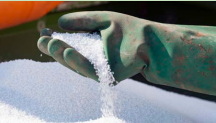
“In other words, using Nitram resulted in crops recovering an extra 16% or 32kg/ha N than they would have done with the same application rate of urea.”
Even in 2018 when poor weather meant all treatments on all trials had a relatively poor recovery of Nitrogen, Nitram still outperformed urea, he says. “NfUE analysis dispels the continued sentiment that whilst urea volatilises N to the air, AN leaches to groundwater so the overall environmental impact from both products is similar. “It’s just not the case. The N losses through volatilisation from urea are far greater than any perceived losses with AN through loss via the soil. Urea has the potential to leach nitrate-N via soil processes in addition to losing N as ammonia. “Even with inhibited urea-based products designed to reduce loss of Ammonia to the air, volatilisation is still an issue.”
Trials underline AN benefits
High quality Ammonium Nitrate (Nitram – 34.5%N) achieved an average Nitrogen Fertiliser Use Efficiency (NfUE) of 70% compared to 60% for UAN and just 63% for UAN treated with the latest polymer-based inhibitor products, in ADAS trials carried out in 2019.
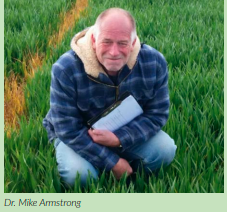
In practical terms, the better NfUE from Nitram AN produced an extra 0.4t/ha of milling wheat over crops using a urea fertiliser as their only source of Nitrogen in trials carried out by Armstrong Ltd. At all fertiliser rates, Ammonium Nitrate (AN) outperformed, explains Dr. Mike Armstrong. “There was a significant yield advantage in favour of AN across all plots in the trial. Even where urea was used as an early application and then followed by AN, there was a 0.25t/ ha drop in yield compared with crops given all their Nitrogen as AN.
“We wanted to look at all possible scenarios of urea use versus AN so as well as a direct comparison of the two, we also wanted to test the idea that urea can be a safe, lower-cost early application. “An application of 50kg N/ha of urea was applied in these instances with remainder of the fertiliser application being made up of 34.5% Nitram AN.” A range of application rates up to 360kg N/ha were used with the optimum rate found to be 254kg N/ha. “At this rate, the AN crops were producing 10.3t/ha whilst the urea ones were at 9.9 t/ha.”
Major steps in manufacturing efficiency
While focusing on choosing the right product to maximise NfUE and reduce loss on N to the atmosphere another key component is the carbon footprint of manufacture, CF Fertiliser’s’ director of public affairs Debbie Baker points out. “For our part, we’ve made major steps in reducing the greenhouse gas emissions associated with our fertiliser production, worked hard to produce accurate carbon footprints for all our products and made significant steps forward with recycling throughout all our processes.
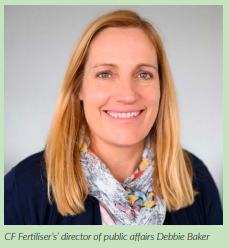
“CF Fertilisers has over 50 years experience in production and supply of the highest integrity fertiliser products. We manufacture Ammonium Nitrate (Nitrogen) Fertilisers at our sites at Ince in Cheshire and Billingham in Teesside. At Ince, we also combine Nitrogen with the other plant nutrients Phosphorus, Potassium and Sulphur to create true granular compounds that meet the wide variety of soil type and crop requirements found in the UK.”
Sustainable Nitrogen Production
Of the four million tonnes of Nitrogenbased fertiliser products used in British Agriculture every year, with CF manufacturing and supplying up to 35% of this. “You can’t get away from the fact that fertiliser production is an energy intensive process,” Debbie Baker explains. “But over recent years CF Fertilisers has invested heavily in ensuring that our manufacturing is as efficient as possible and has the least impact on the environment. It’s an area we are committed to investing in for the longterm too. One such investment has been to install state-of-the-art nitrous oxide (N2O) abatement technology on the nitric acid plants at Billingham. “N2O is an unavoidable byproduct of nitric acid manufacture and is a significant greenhouse gas.
The nitric acid is a key base for Ammonium Nitrate production. Over the last few years, we’ve invested £9M in our manufacturing facilities to reduce our production of N2O emissions by 3000 tonnes every year. “As a greenhouse gas, N2O is 300 times more powerful than CO2 in terms of it’s effect on the environment, so that’s equal to 900,000 tonnes of CO2 . “This is equivalent to the whole of the 30% CO2 reduction required by UK agriculture by 2022, so it’s a sizeable amount and indicative of the effort and resources we have put in to make sure our own production is as sustainable and environmentally acceptable as possible. “All told we’ve reduced the carbon footprint of Nitram production by 40% since 2010.
Working with the Carbon Trust
To make the major improvements in manufacturing and emissions reduction as practically useful as possible to customers, CF has produced businessto-business (or cradle to farmgate) fully audited and certified carbon footprints for its entire range of fertilisers as well as the ammonia and nitric acid used in the manufacture of its Ammonium Nitrate. To ensure these carry maximum credibility and are readily recognised by everybody as 100% independently verifiable, the company took the decision to work with the Carbon Trust to achieve this, Debbie explains.

“Not only does this mean they have undergone rigorous independent scrutiny, they have also been calculated using the standards set out in the robust and internationally recognised PAS 2050 protocol. “The resulting footprint represents the true carbon emissions for fertiliser production from the raw materials right up to delivery to the farm gate.” CF Fertilisers product carbon footprints were first certified by the Carbon Trust in April 2013 and are reassessed every two years. The footprints for process chemicals are expressed as kg CO2 e per kg of product, whereas fertiliser products are given as kg CO2e per kg Nitrogen (N). “Fertiliser usage in on-farm Nutrient Management Plans is considered on the basis of N requirement, so this approach allows the simplest comparison between our products for a given crop requirement.
“The process doesn’t end there, though. In using the carbon reduction label, CF Fertilisers has promised to reduce the footprint for process chemicals and Nitram, demonstrating an ongoing commitment to carbon reduction.”
On farm benefits of carbon-focused thinking
The investment in manufacturing, research and knowledge sharing is starting to have real benefits for farmers moving forward, says Dr. Fisher. “Emerging legislation, such as that coming out of the Clean Air Strategy, will make using urea increasingly difficult in the future and with its use being very dependent on the weather, it also puts a much greater element of risk into your business. “Every producer, whether livestock or arable, should now carry out and follow a Nutrient Management Plan and Carbon audits will become increasingly important in the future.
“Some milk buyers are already asking their suppliers to provide this information and one of the biggest elements of this is your fertiliser use. “It’s something we have been aware of for some years now and whilst the international standard figure is 6.6kg of Carbon for every 1.0kg of N you use, with CF Ammonium Nitrate (Nitram) it is almost half this at 3.4kg for every 1.0kg of N used. “This is a result of the investment we have made in de-carbonising the manufacturing process.”
Little and often applications improve fertiliser use efficiency
Little and often applications of Nitrogen can boost milling wheat yields by nearly 0.4t/ha without causing dilution of grain protein content, new research from ADAS is suggesting.
While yield from 260kg N/ha applied as four applications at one site produced a yield of 11.73t/ha, this rose to 12.11t/ha with the same grain protein content when the same amount of fertiliser was applied as seven applications, explains ADAS crop physiologist Dr. Kate Storer.
The trials were carried out in Terrington, Norfolk, and Wharram-leStreet, Yorkshire. The Norfolk site was on a silty clay loam with the variety Skyfall after oilseed rape whilst the Yorkshire site was on a silty clay loam over chalk, using the variety Elicit after beans.
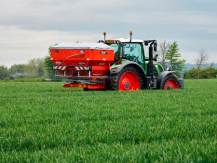
N-Min soil testing was carried out to ascertain soil N resources with a total Soil Nitrogen Supply (SNS) of 92kg N/ha recorded at Terrington. N-Calc was then used to produce an estimate of 260kg N/ha applied N would be needed to achieve yield and quality targets. Fertiliser was applied as high quality Ammonium Nitrate (Nitram 34.5%) with the standard plots receiving an initial application of 50kg N/ha on 22 February followed by further applications of 80kg N/ha at GS 31, 80kg N/ha at GS 32 and a final one of 50kg N/ha at GS 37/39.
The L&O plots received an initial application of 25kg N/ha on 22 February followed by a further application of 25kg N/ha in early March and then four applications of 40kg N/ ha at GS 30, 31, 32, 33 and a final one of 50kg N/ha at GS 37/39. The second trial at Wharram-le-Street in Yorkshire used a similar approach with a lower total N application of 230 kg/ha over six splits, she explains. “The L&O timings were designed so that they fed the crop as it grew and avoided excess N in the soil early in the season. “At Wharram-le-Street the dry conditions after some of the later L&O applications may have delayed N uptake in those plots, with lower Normalised Difference Vegetation Index (NDVI) values seen in the L&O treatments, but there was no negative effect on yield.
” That said, at harvest, analysis showed there was a trend for higher NfUE in the L&O plots at both sites. It is likely most of the additional N uptake in the L&O crops took place as they were actively growing in spring and early summer, Kate Storer believes. “There was an increase in N straw concentration in the L&O plots suggesting the greater N uptake efficiency resulted from more N being taken up by plants during stem extension and ear formation.
“As well as improved production opportunities, it is possible the greater N uptake from the L&O approach may also reduce the risk of nitrate leaching during the following winter, so there are potential environmental benefits too.”
-
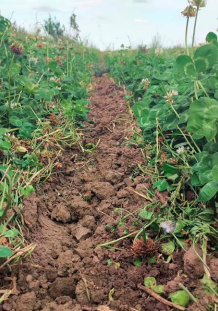
Innovative Farmers Living Mulch Field Lab
By Jerry Alford. Innovative Farmers and Dominic Amos, Organic Research Centre
This Innovative Farmers project brings together organic and conventional notill farmers to investigate the potential for implementing a long-term system with the aim of maintaining a perennial living mulch of white clover whilst growing an annual combinable cash crop. The benefits are widespread, from reduced inputs for conventional farmers to a reduction in cultivations for the organic farmers in the group. This is where the trial is most fascinating because it Is a coming together of two farming systems who want to get the best out of their systems, whilst using the best of other people’s systems.
Organic farming is well known for having a set of principles based around a systems approach with minimal external inputs and conservation ag also has a set of principles it adheres to, being diversity, cover crops and minimal soil disturbance. The trial combines these principles and with sponsorship by Organic Arable, research input from The Organic Research Centre, technical advice form Cotswold Seeds and coordination from AHDB it is a trial that has a broad base of interest.
The basis of the trial is a permanent clover understorey which provides mulching, fertility and soil protection into which annual combinable crops are planted. There are two very important services the mulch will provide; weed suppression and nitrogen accumulation. In addition, the system should enhance soil physical characteristics, selfregulation of pests and diseases and increased biodiversity, both above and below ground. The living mulch system makes use of practices already common with cover cropping and elements of intercropping including undersowing and relay cropping. There are 6 farmers involved, farming from Shropshire to Suffolk, organic and conventional and each have different soils, systems and equipment. The one similarity is they are all using the same clover mix of 70% wild white and 30% medium leaf white clover as the understorey mix supplied by Cotswold seeds.
The Innovative Farmers programme takes farm trials already being carried out by farmers and introduce more structured experimentation to merge science and practice. It also brings groups of farmers together to create more of a “collective experiment” To that end the farmers will all grow the same mulch and should all include a control plot that represents current standard farm practice. This will provide a relevant comparison for agronomy, production and economics allowing new conclusions to be drawn about the effects of the new living mulch system. Without controls, effects on crop yield or weed control cannot be established. Data will be collected from living mulch and control plots at key times over the next two growing seasons and will constitute measurements of cash crop, cover crop and weed biomass, and soil mineral nitrogen as well as yield and grain quality supplied by the farmers. Establishment of the clover has been difficult and variable this spring with the very dry April and May. The clover will be monitored and following harvest this year may require a “top-up”.
As this group of farmers has developed, the amount of experimentation that has already been carried out has become apparent with one of the organic farmers growing cereals with a trefoil understorey for some years. For him, the slightly lower yield that has been achieved has been balanced economically by the ability to grow more combinable crops in his rotation without so many fertilitybuilding breaks and a slight increase in the protein content of the triticale. Another farmer has tried wheat sown into a mulch of either red or white clover with rye grass which ended up offering too much competition with the cereal and the trial was eventually taken as a wholecrop for silage. For other organic farmers, undersowing has been a feature for many years and in long term organic systems, white clover is a common ‘weed’ and so it makes sense to utilise it rather than fight it. Direct drilling into a grazed off ley has been a common organic farmers experiment, but often with mixed outcomes.
For the conventional farmers, reduction in chemical inputs, particularly nitrogen, are an important consideration with the drive for zero carbon farming putting fertiliser inputs in the firing line. Profitability rather than production at all costs being an important factor in their business planning. This means conventional no-till will have both economic and environmental drivers to reduce inputs.
For others, attempting to get something out of a disaster has led to an opportunistic undersowing experiment. Field lab member Marcus Struthers from Courteenhall Estate,Northampton, explains -We had a failed WOSR field (7ha) last year which we drilled with white clover and took it through till the autumn with fantastic establishment. This we drilled directly into it around December time, which was later than we wanted but the weather held us back, surprisingly though this field has been looking the best on the farm all season, with minimal inputs and only the 2 chemical passes to date. Due to the results we have seen this year, with a relatively small area we have increased it this spring under sowing 35 ha of Spring Barley with white clover and another 11.5ha with a clover and black oat mix.
For us it is an exciting time, being able to cut chemical applications, introduce rouging where necessary, weed suppression, increase soil health etc.
The different farmers in the group are also seeing different potential problems, and the benefits of an interactive approach using webinars (due to Covid-19) and WhatsApp has allowed discussion.
The wet autumn and winter of 2019/20 have delayed this trial from its original start date and so we are just at a start-up stage, with the dry spring affecting mulch planting. Again, different experiences come to play with a more relaxed view from organic farmers who are used to undersowing but are also used to not doing anything to growing crops when they are drilled. Different techniques are also apparent here with some mulches direct drilled into existing crops, and others drilling with spring crops following rain. In one case the clover is being grown under a buckwheat crop, which is itself an experiment.
Following crops will mainly be wheat or oats, although any combinable crop including maize, can in theory, be used. However, the most vigorous and competitive winter crops such as rye or oats may make most sense particularly in the early stages of the new system as this will maximise the competitive ability of the crop against both mulch and weeds. Research indicates that it may take a few seasons for the new system to bed in and in terms of nitrogen cycling and crop availability, this looks to be higher in the second season.

The difficulty will be reducing competition on the germinating crop at the critical seedling period. Research shows that the dominant biomass when growth starts in the spring tends to be the winner, and so a relay cropping type approach is envisaged with the autumn crop being drilled as the mulch slows its growth due to reducing temperatures and day length. The key here is that a winter cereal will continue to grow through this period, tillering and developing its root system whilst the clover remains dormant. This may explain why the organic farmers who grazed their direct drilled crops off in the winter had mixed results. The concept of critical weed free period (i.e how long weed competition needs to be absent in order not to reduce grain yield) has been well established for decades.
The key to achieving a functional living mulch system with a tolerable yield reduction will involve maximising the competitive ability of the cash crop while selectively weakening the cover crop at key stages. With the mulch mix already selected for its complementarity as an intercrop, the organic farms have only cash crop species selection, drilling date and drilling method to influence the cash and cover crop dynamic. Of course with herbicides and nitrogen fertiliser, conventional no-till farmers have two additional tools at their disposal to help hand the competitive advantage to the cash crop, boost yield and control weeds if the mulch doesn’t offer enough of the service provision the farmers are looking for, namely weed control and N-accumulation.
For the experienced no-tillers, weed control is not seen as an issue because experience says that minimal disturbance leads to less weeds germinating whereas the organic farmers see a strip till type system being advantageous, possibly keeping mulched and cropped strips in the fields to minimise competition to the future crops. Certainly, research has shown that the longer the mulch can be kept from the base of the cash crop, the lower the yield reduction will be. Providing a channel for the growth and development of the crop at least during the foundation and early construction phases is likely to be important with the clover a stolon former it will close in any gaps and provide full groundcover by harvest. One of the benefits of an established perennial mulch may be improved trafficability and one of the farmers involved is considering a spring wheat like Mulika drilled in January that will give enhanced early vigour and establishment to grow away from the mulch before it gets going in the spring.
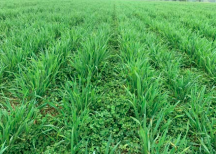
Control of the mulch growth is a key component of the trial and there are 2 stages which are important, prior to or just after drilling and during the spring when the crop will need to gain both water, and nutrients, in direct competition with the clover. One area being looked at is the possibility of mowing between rows (cf. inter row hoeing) to mulch the clover but there are crimpers and rollers being used elsewhere which achieve the same objective. It is important to release some of the nitrogen produced by the clover at times when the crop needs it, because clovers do not release the nitrogen without a reason and will stop producing nitrogen if there is too much available. For conventional farmers there are chemical, including fertiliser, options to manage the clover mulch but these are not possible for the organic farmers.
Autumn grazing with sheep is seen as the preferred option for those farmers with livestock but mulching the crop, crimping or rolling on a frost are alternatives that will suit stockless systems. The advantage of the living mulch approach is that there is no soil disturbance to stimulate weeds and the living plant will continue to suppress further germination. There are obviously potential problems, and areas where we need more knowledge-what about grass weeds and in particular blackgrass? What about perennial weeds? And what effect will the mulch have on crop yields and will the economics only work with organic prices. These can only be resolved by research and this is where the Innovative Farmers field labs are so effective, small scale projects which test hypotheses and look on tramline or plot scale with researcher input in trial design, data collection and interpretation.

-

Farmer Focus – Tom Sewell

Well first things first! I just re-read my last article and how things have changed in just a few months! In many ways the whole world has changed. Since writing my last article on the 25th February the whole country has entered lockdown, the rain has stopped falling from the sky (although its been wet here today on 10th June!) and the memory of Caroline Flack calling the world to “be kind’ is a long distant memory in the year like no other.
I’m not sure we have ever had two completely contrasting periods of weather back to back as we have done this past 8 months. From wet and flooded to baked-out, rock hard fields this season has been difficult and challenging. Once the weather did start to dry the fields we made a start with spring planting beginning with some winter beans that we sowed in the spring to finish a block where the weather stopped us last November. We have treated these as a cover crop that we may harvest. Having something growing is certainly better than bare stubbles and although only short, the recent rains may help them see the combine rather than the drill next into the field!
We moved onto a block of spring barley next that we planted into a cover crop that had been grazed by sheep over the winter. In hindsight we were probably a few days too early as the soil was still a little tacky and we can see far better establishment and crop development where the tractor tyres mineralised some nitrogen and the crop got away quicker. Perhaps a year for a low disturbance tine drill over a very low disturbance disc?!

We also drilled spring oats, spring wheat, spring barley and spring beans for contracting clients which has generally worked well. The Novag drill that we have here for demonstration and evaluation arrived a week after we finished drilling so has just been hitched up to the tractor and parked in the shed since. I did get it out alongside the crossslot today to compare the two machines. Having not used the Novag yet I obviously can’t comment on its performance but I can make some observations about build quality, spec and initial thoughts.
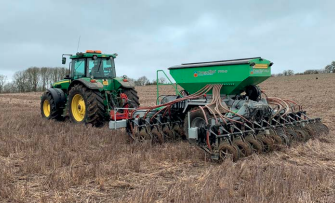
You can see from some of the photos here that there are many similarities and a few subtle differences between the two machines. The cross slot was built on the farm 7 years ago, with the help of Paul and James Alexander at Primewest, and has been faultless since then with wearing metal being the only thing we’ve had to change in that time. It’s a 21 opener machine running at 225mm/9” rows giving an operating width of 4.8m. We generally operate at around 10kph and its pulled with a 300hp JD8520. One of the real benefits of the Cross Slot is that it folds to 2.5m for transport so it’s the same width as a grain trailer! When folded it has all of the openers on the vertical, so maintenance is both safe and very easy, particularly when changing discs and blades. Our drill has a seed only hopper that holds 2 ton of wheat seed. The build quality is superb, very heavy duty, well made and will last for many years.

Initial impressions of the Novag are that it is a superbly finished and presented drill. The machine we have been sent is a 25 opener drill on 250mm/10” rows with both seed and solid fertiliser tanks which will drill at 6.25m. There are also 2 other hoppers. One for slug pellets that are spread behind the drill from 4 outlets and another hopper for small seeds which can be metered into the Venturi and planted with seeds in the large seed tank.
At 3m wide the drill is wider and more imposing. Some of the openers remain in the horizontal position when the drill is folded but the hydraulic wing hooks that automatically secure the wing sections as the drill is folded are a thing of beauty! There is also a function on the drill which enables some of the openers to be lifted to reduce the operating width. This could be useful for steep fields and where tractor horsepower and traction is limited and is a very good feature in what looks like a superb machine. It will be very interesting to see it perform in the field after this harvest. The machine will be available for demonstrations around the country, organised by Clive Bailye, so please contact him if you’re interested in seeing it at work.
Speaking of drills we have also added a low disturbance tine drill to our fleet! A 4m Horsch sprinter on Dutch openers will give us another option and some back-up with more land and more contracting coming up. As we all know timeliness and good planting conditions are essential with no-till and I’m not sure any of us have too much capacity?
With the farm looking the most variable I’ve ever seen it the coming harvest will be one to forget I think. We do have some lovely looking Extase as a first wheat and a few November sown winter beans but oilseed rape has been an expensive disaster this year and a crop that we wont be growing next year. Coming up with a balanced rotation going forward will be a challenge and I’m sure I’m not alone in that?!
Can I wish you all a very safe harvest both for you, your families and your staff.
I wonder how things will have changed the next time I write?!
-

Drill Manufacturers In Focus…

DRY SPRING HIGHLIGHTS CLEVER DRILL DESIGN
The Mzuri system is widely recognised as Europe’s principal one pass strip tillage system, unrivalled in cultivation, reconsolidation and seed placement accuracy. Ben Knight demonstrates why.
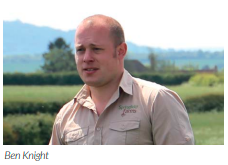
As Mzuri’s farm manager and knowledge exchange officer, I get to see a lot of Mzuri drilled crops around the country as well as those established by conventional and min-till methods. One thing that has struck me this Spring is how well Mzuri Pro-Til established crops have coped with the relentless dry weather.
On the Mzuri trial farm, the jovially named ‘Peopleton Umbrella’ struck again and saw us with no measurable rain since the Cheltenham festival. Thankfully, the Pro-Til’s ability to cultivate, reconsolidate and seed into the perfect nursery seedbed, surrounded by structured soil, gave us the edge when it came to preserving moisture and supporting crop growth sans rainfall. Despite this, both our Winter and Spring crops look well and benefited from rooting into moisture, preserved by previous crop residue and have gone on to produce, healthy viable crops.
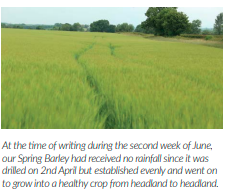
However, you don’t have to go far to find crops that weren’t so lucky. I’ve seen both conventional and min-till crops in surrounding areas struggle with the drought from a combination of either moisture loss at drilling, or a lack of sufficient seed to soil contact and poor reconsolidation.
This is why I can see the value in the ProTil’s cleverly designed features that allow us to prepare and seed into the perfect nursery seedbed, without compromising establishment or soil health. It is the collection of unique features that are laid out below and overleaf that makes the Mzuri Pro-Til an incredible tool for consistent crop establishment across a range of seasons.
I’m pleased to see so many Mzuri users reaping the rewards of the Pro-Til’s clever design and what is proving to be a reliable crop establishment system time and time again.

